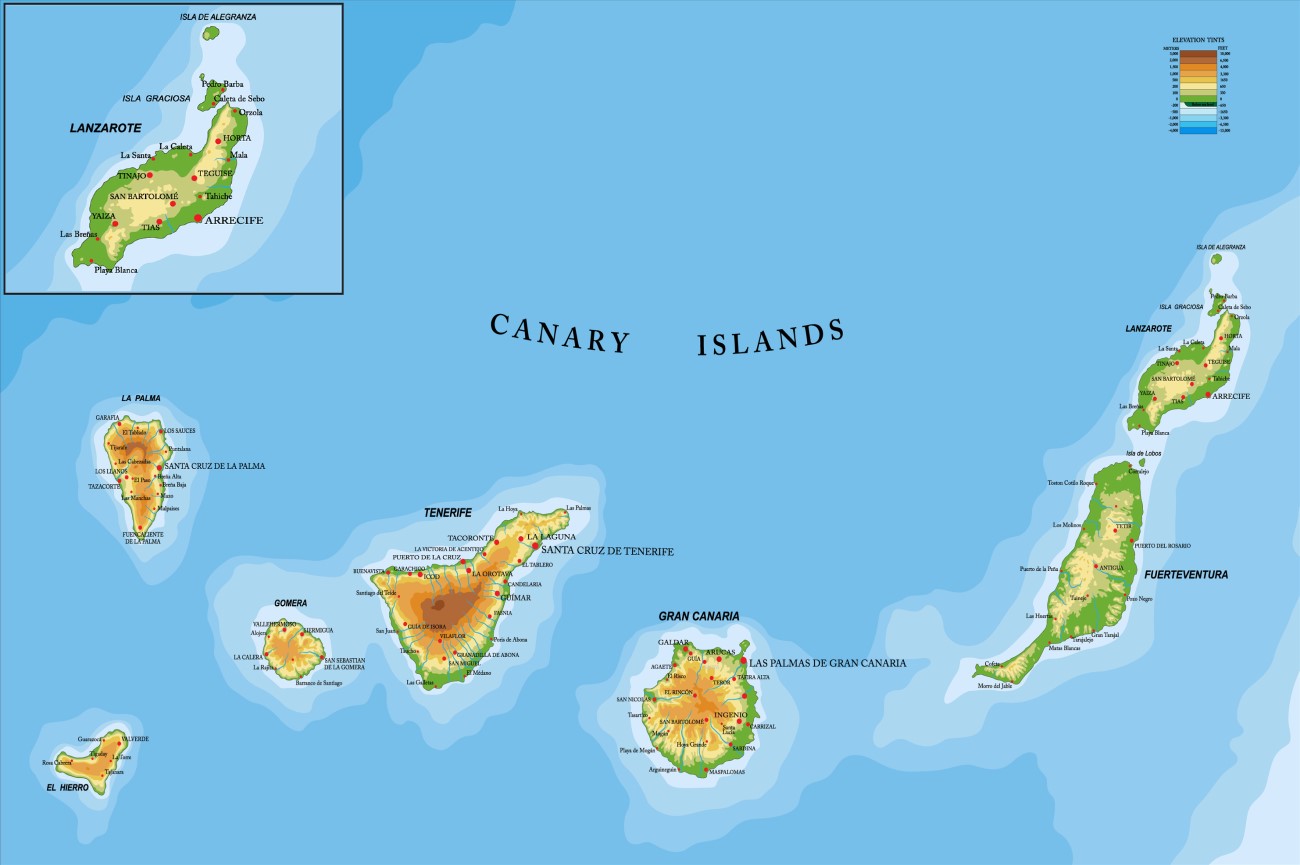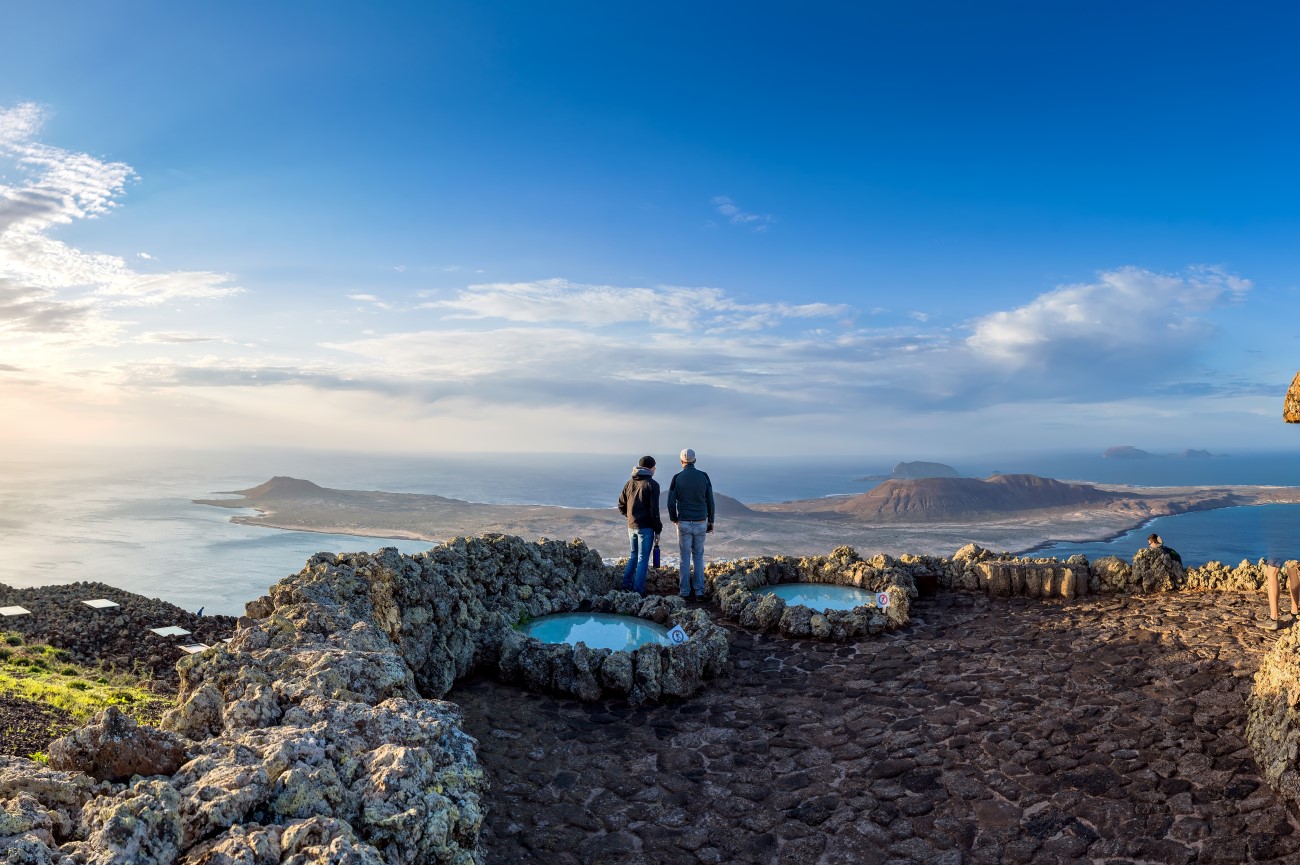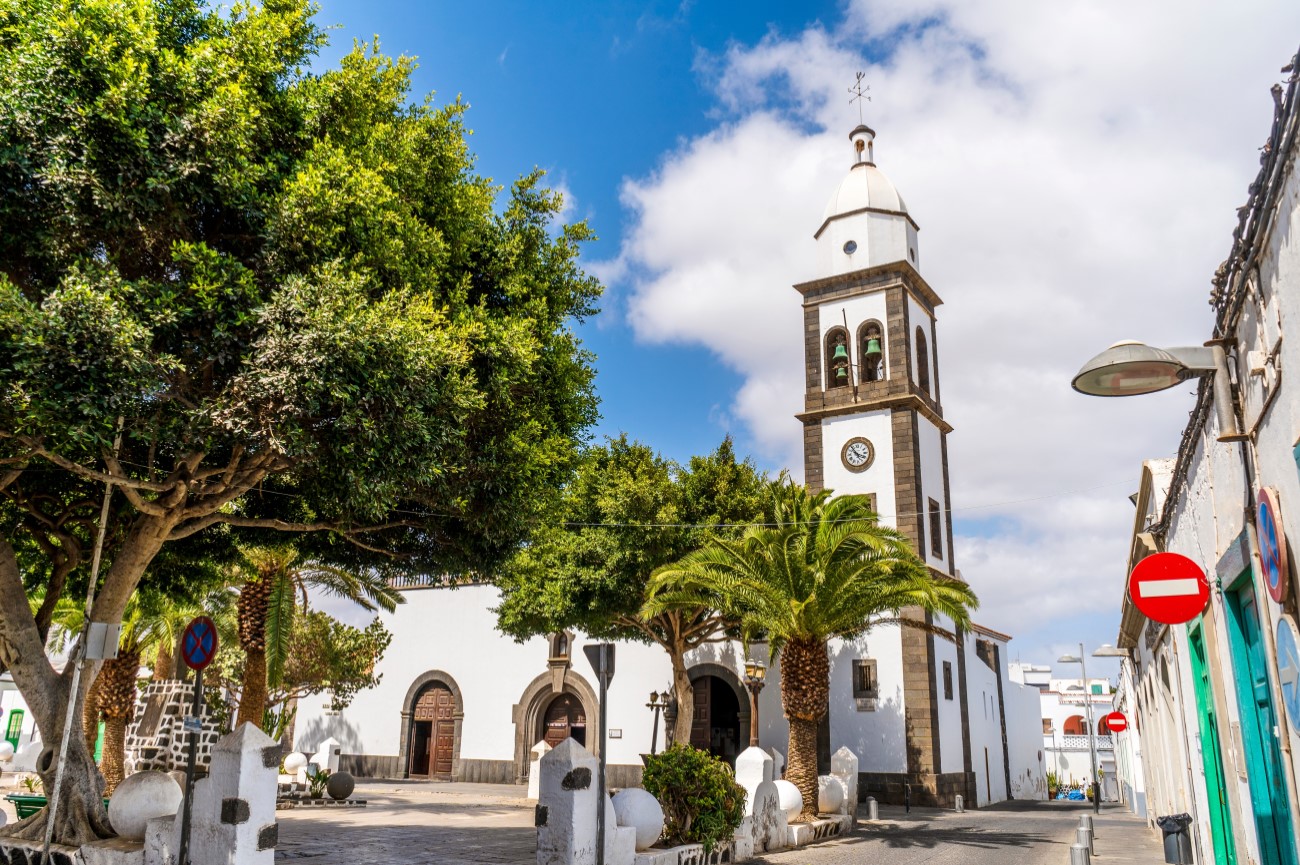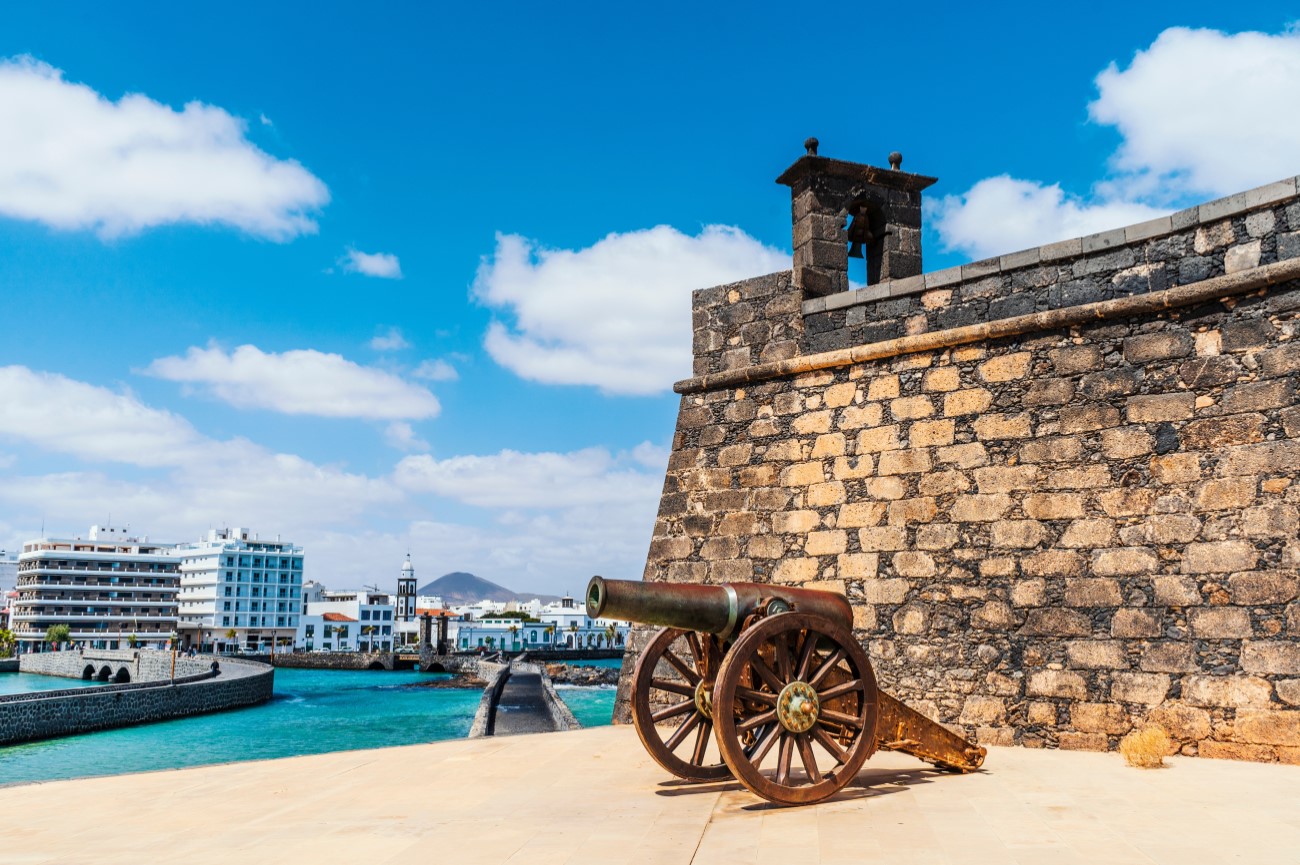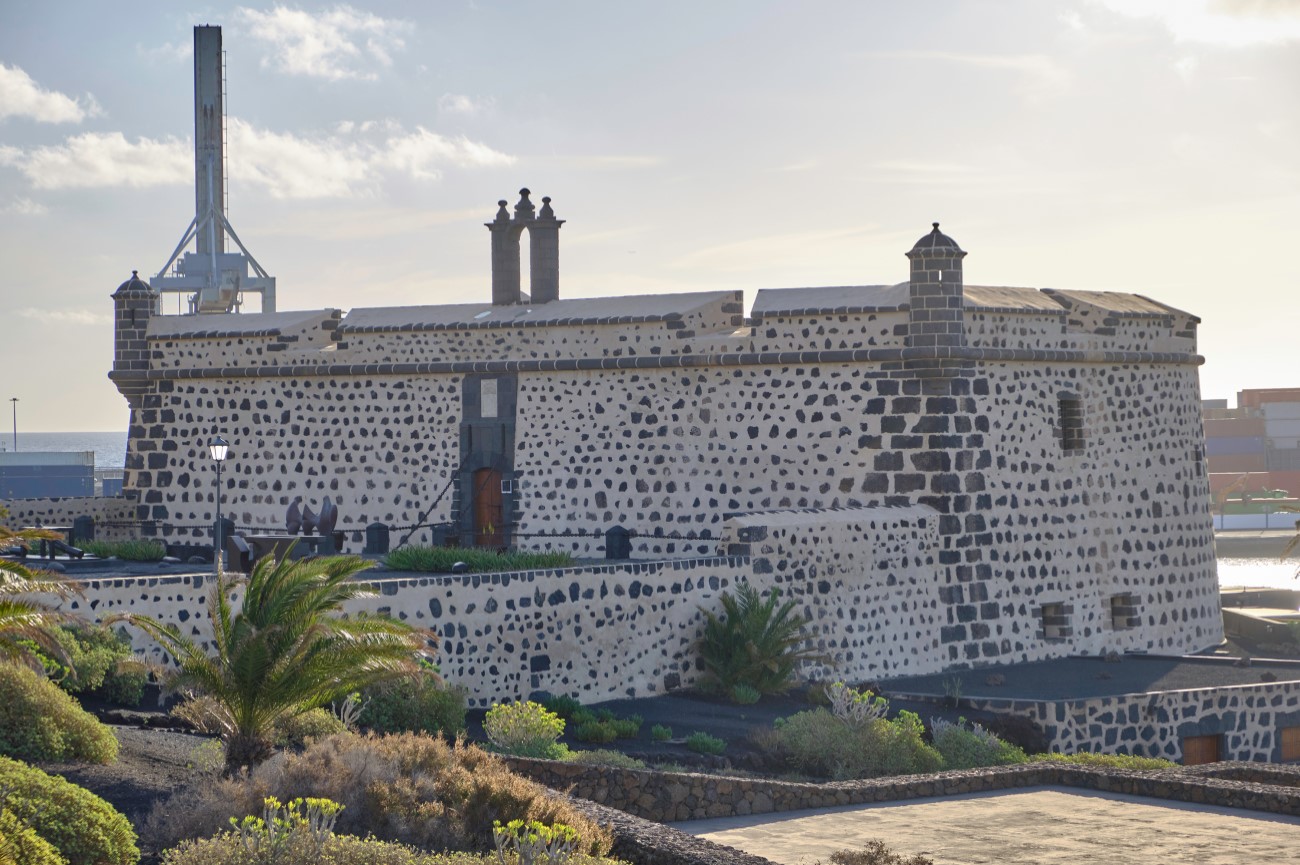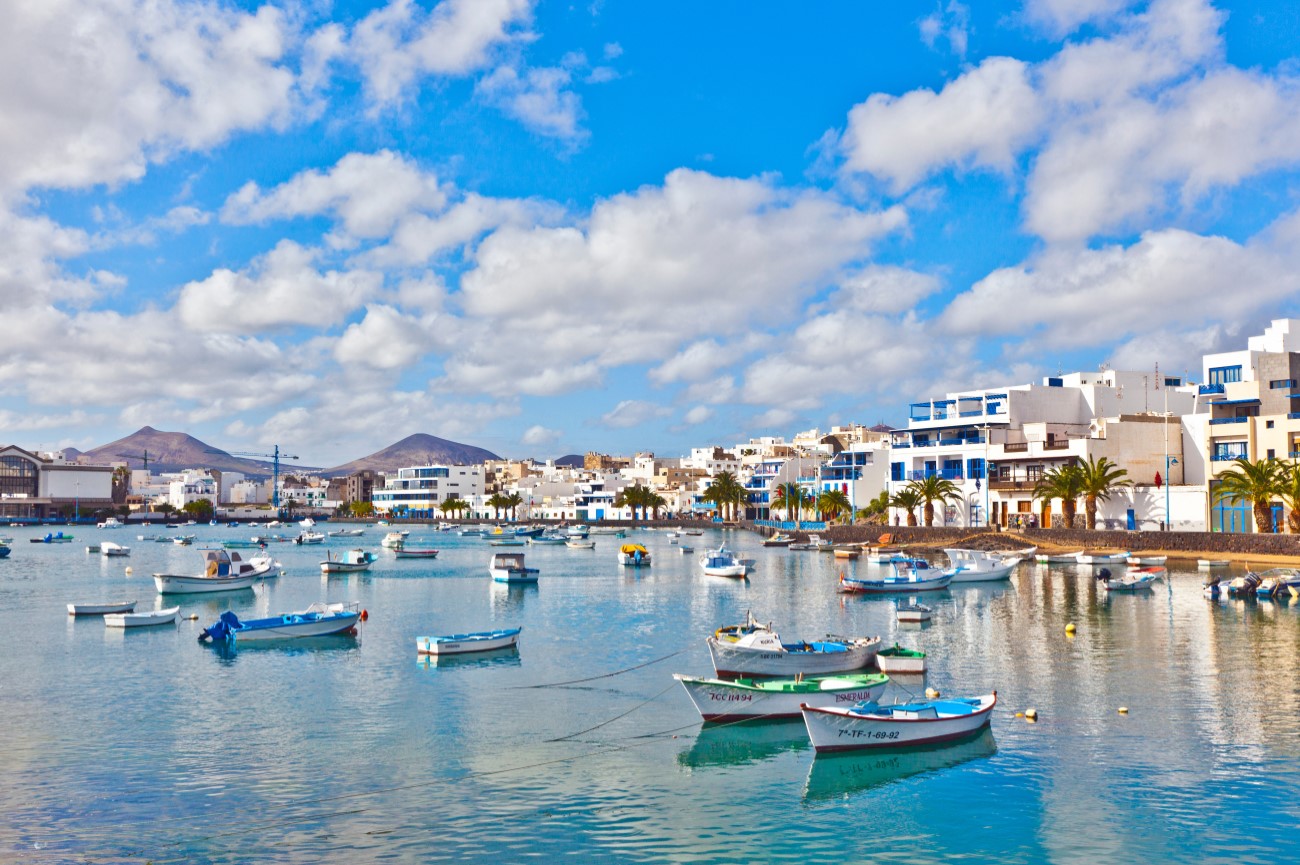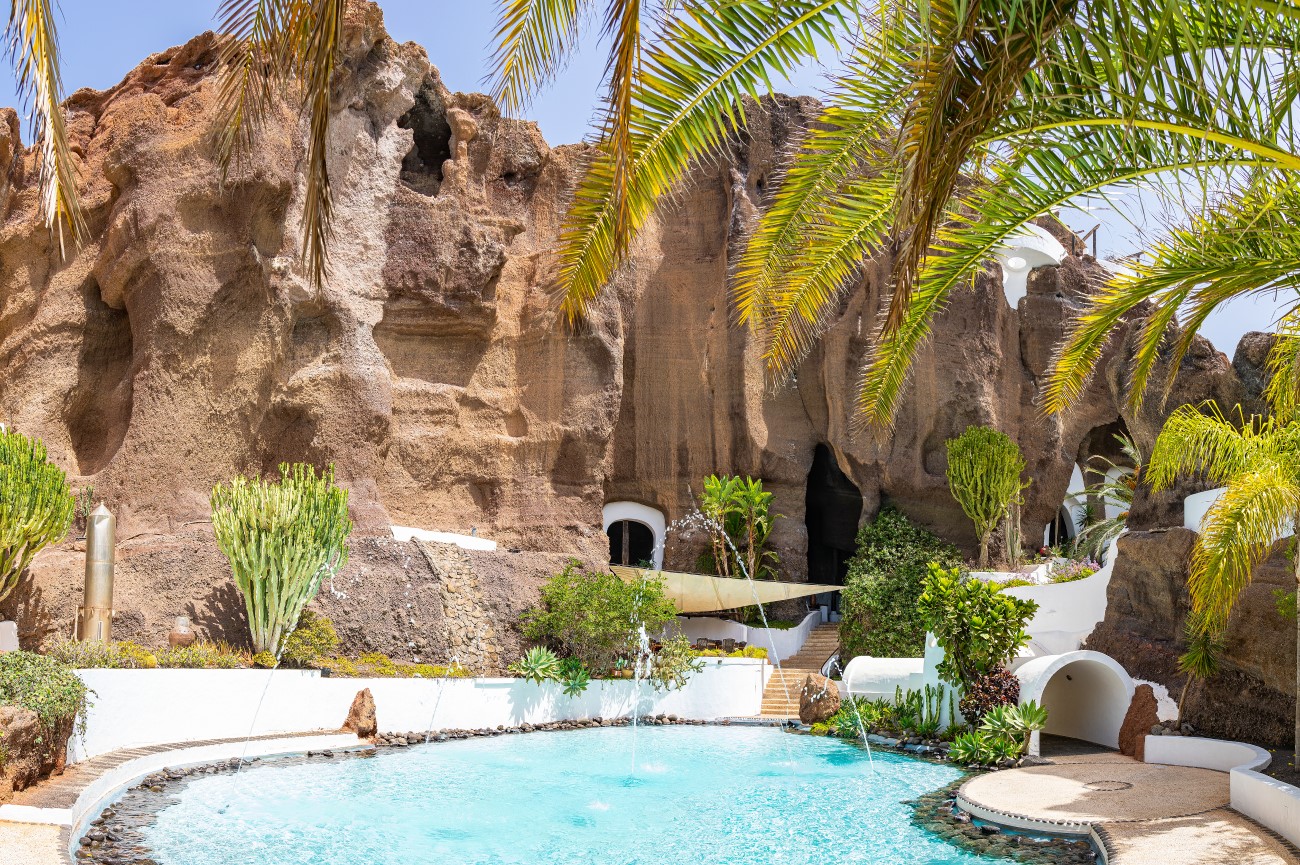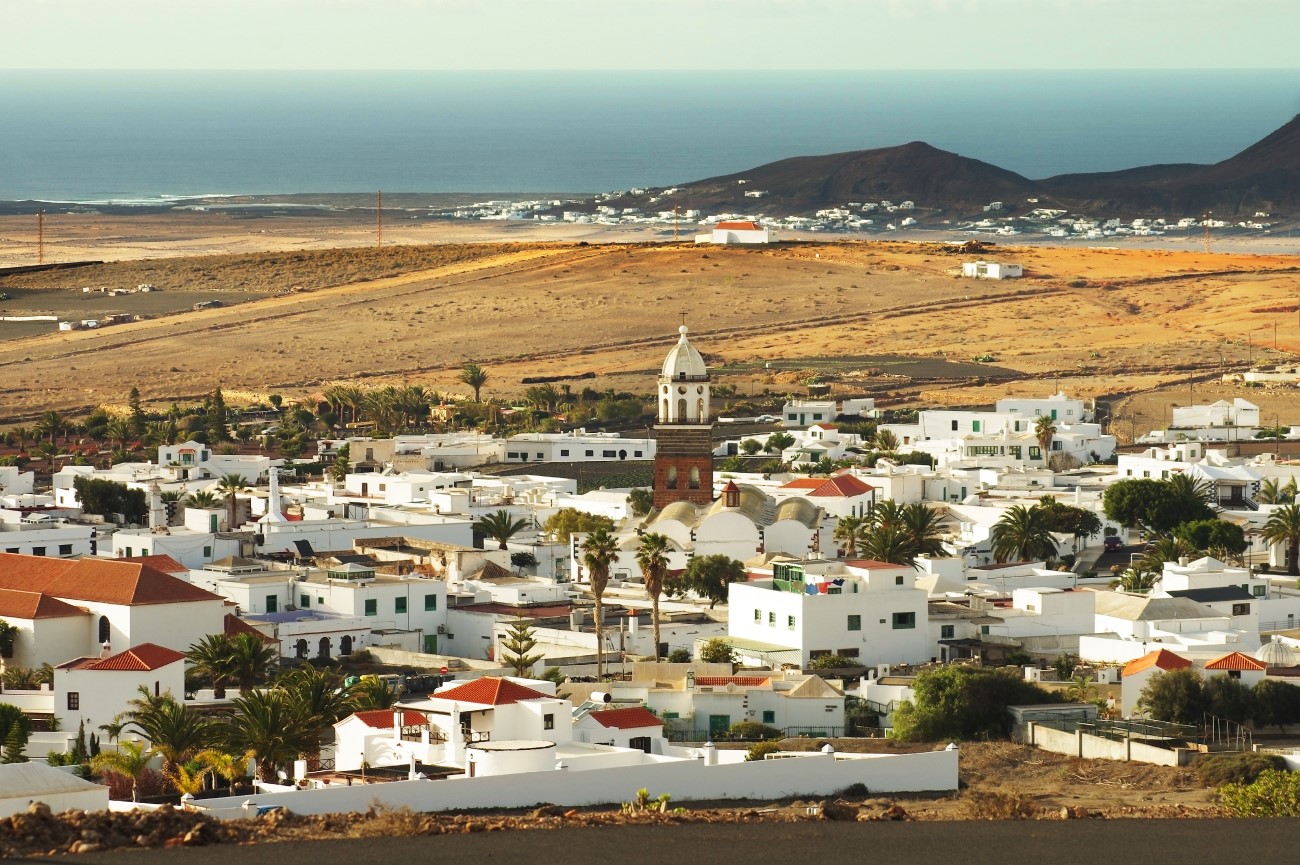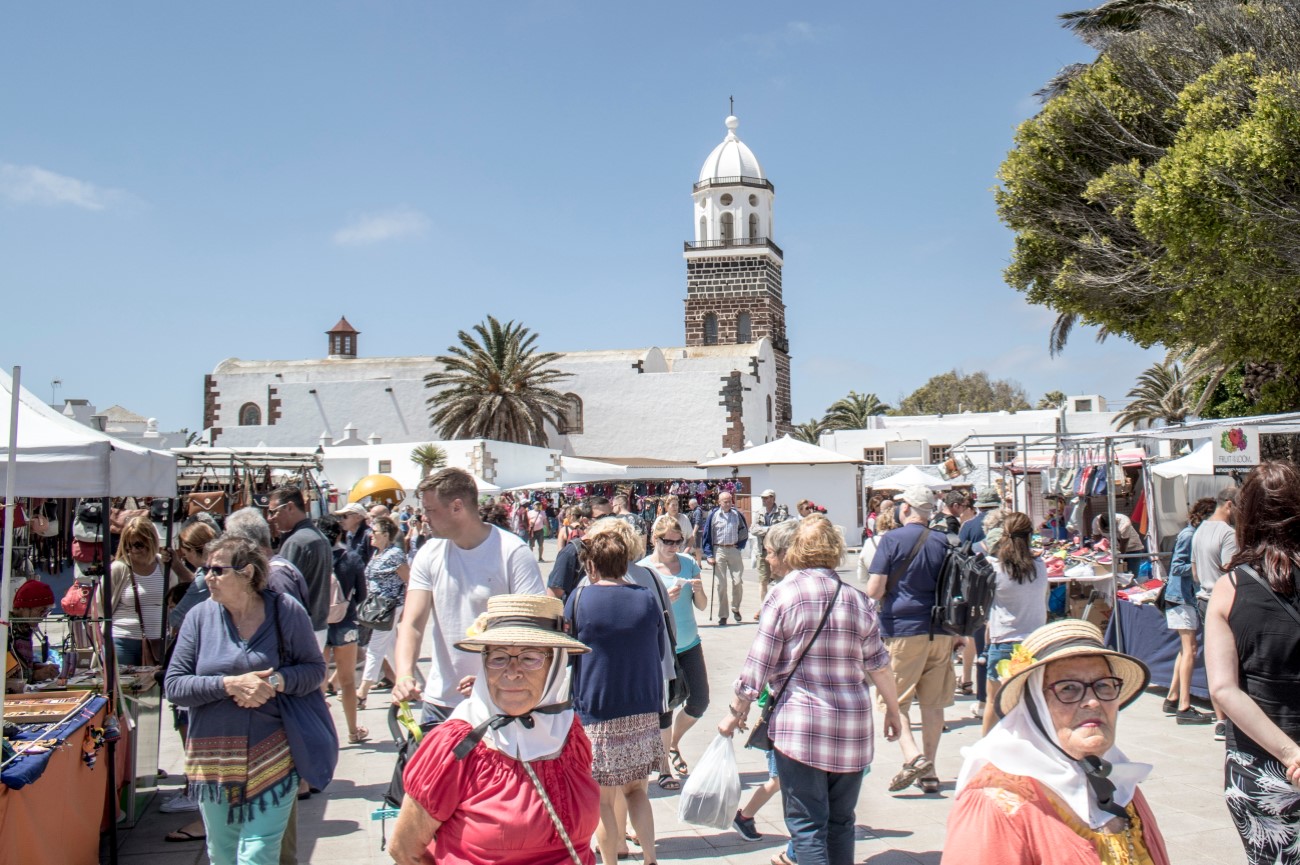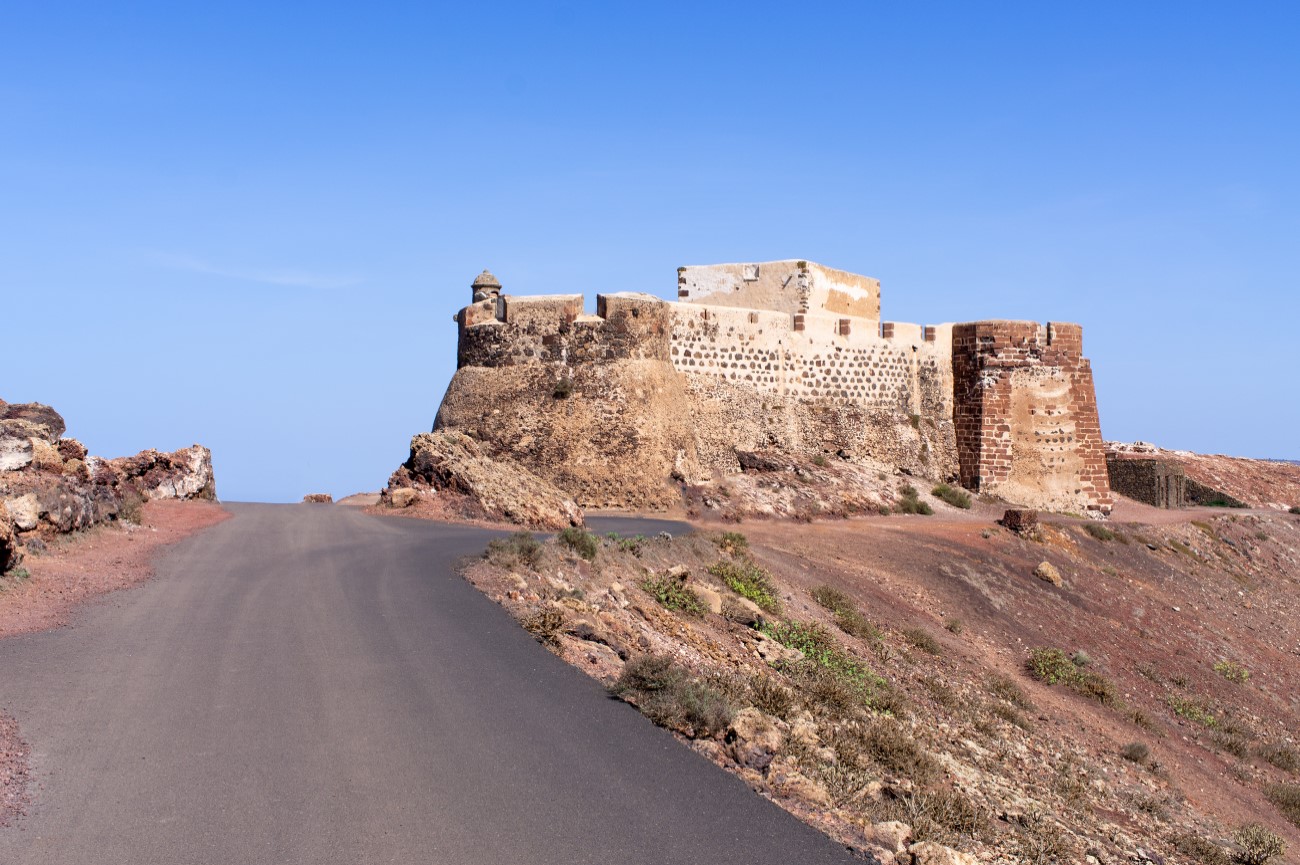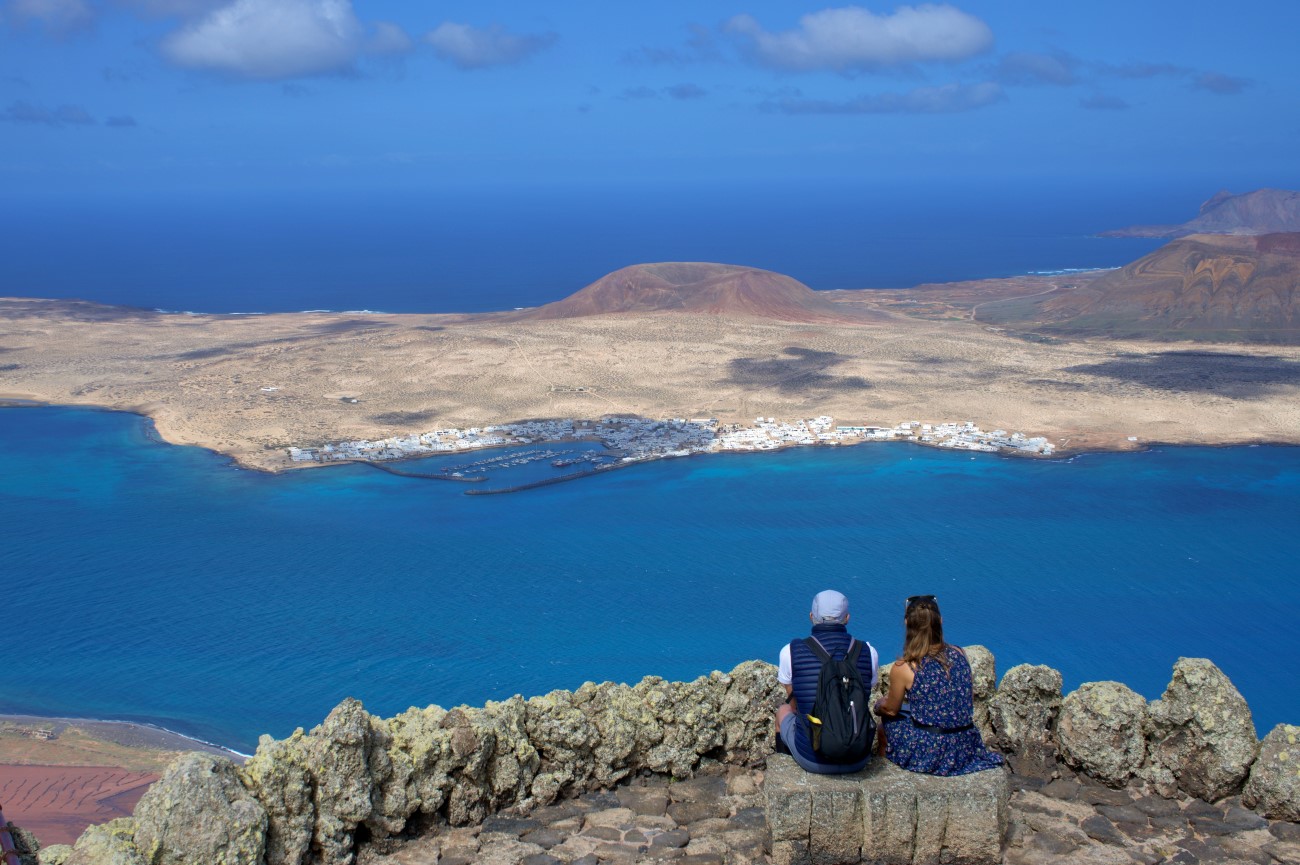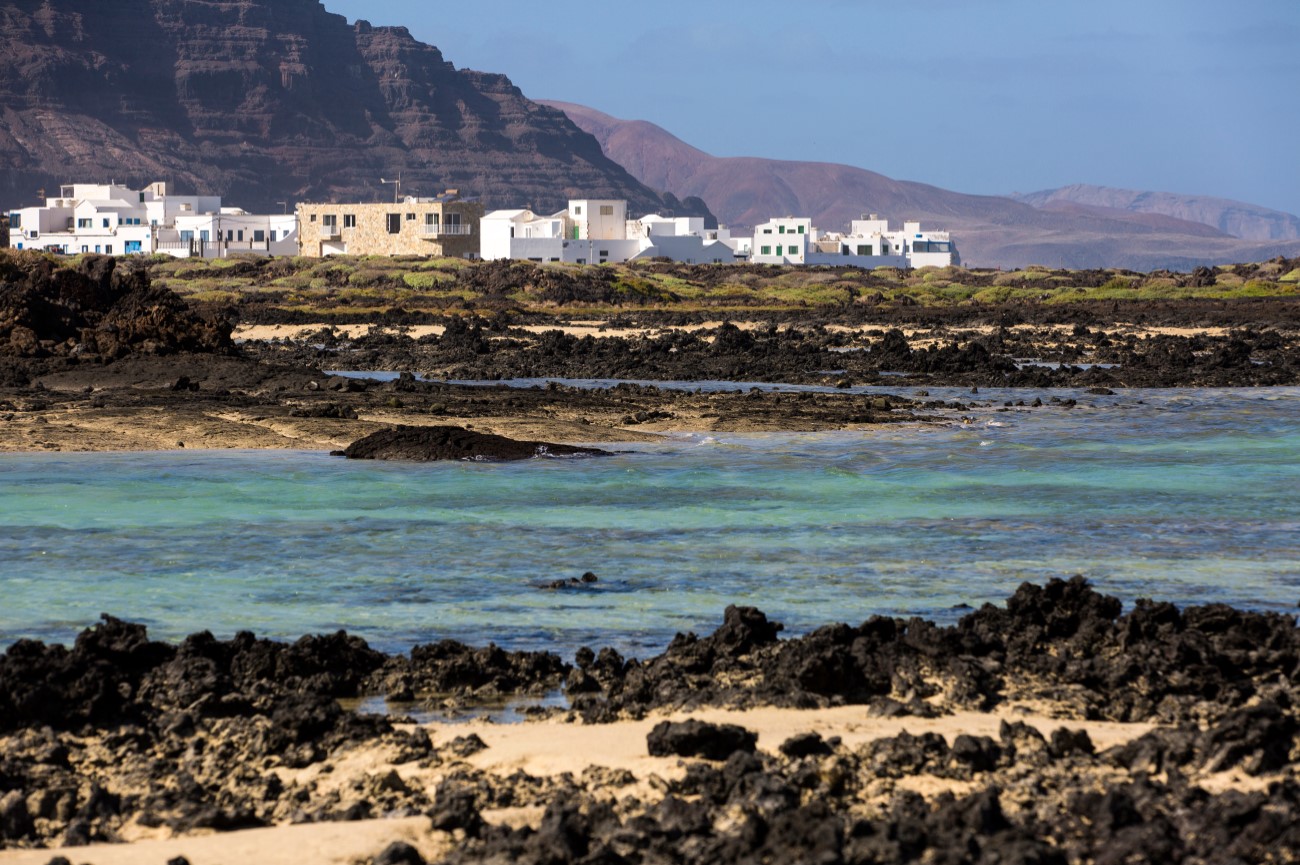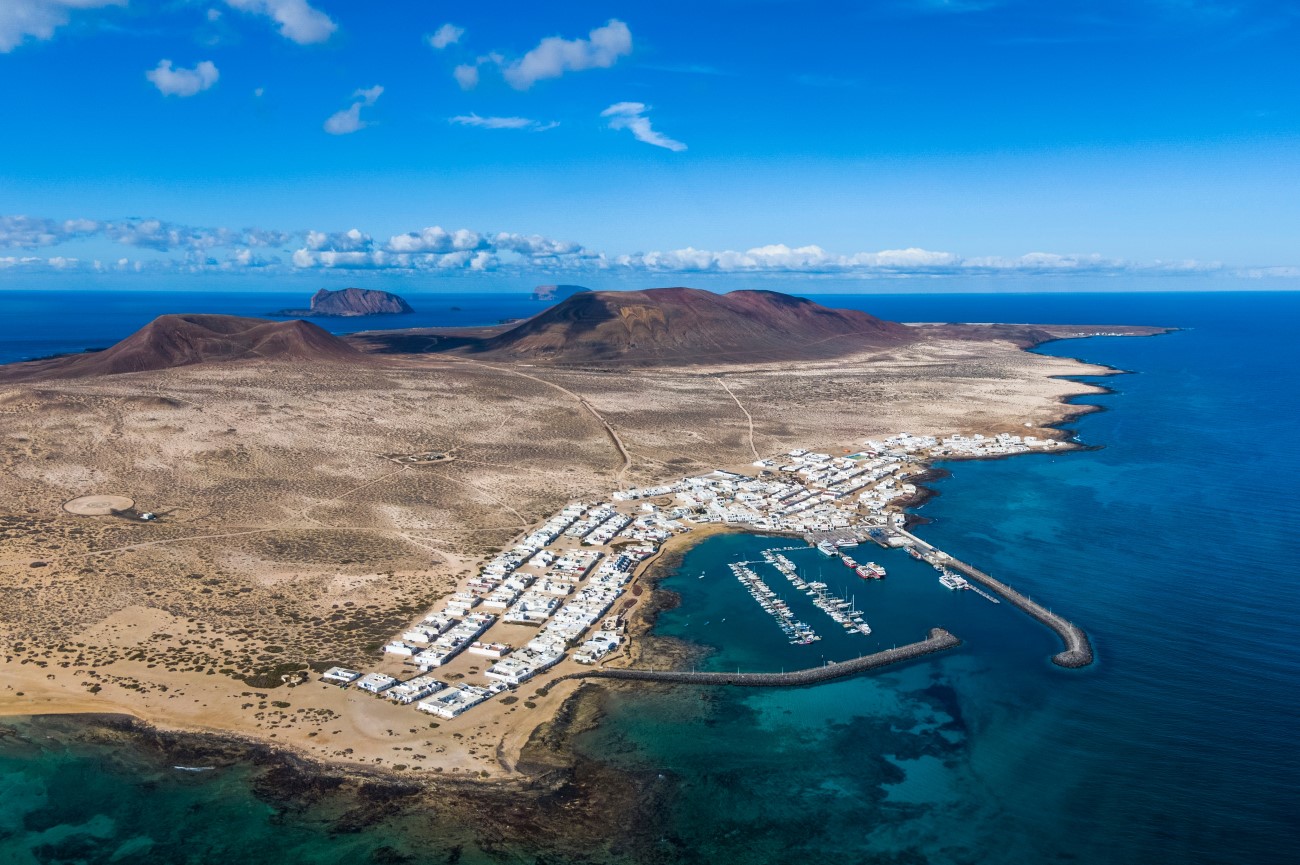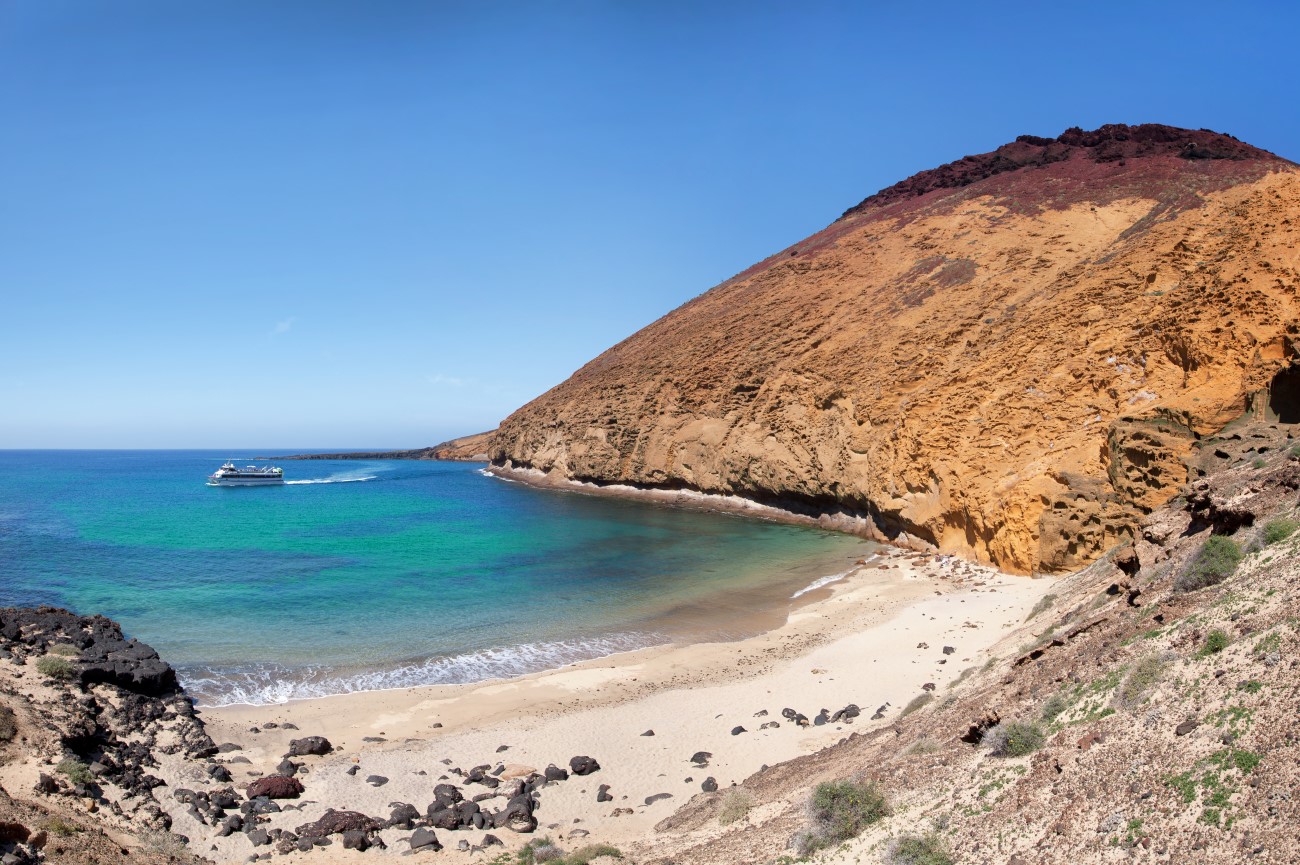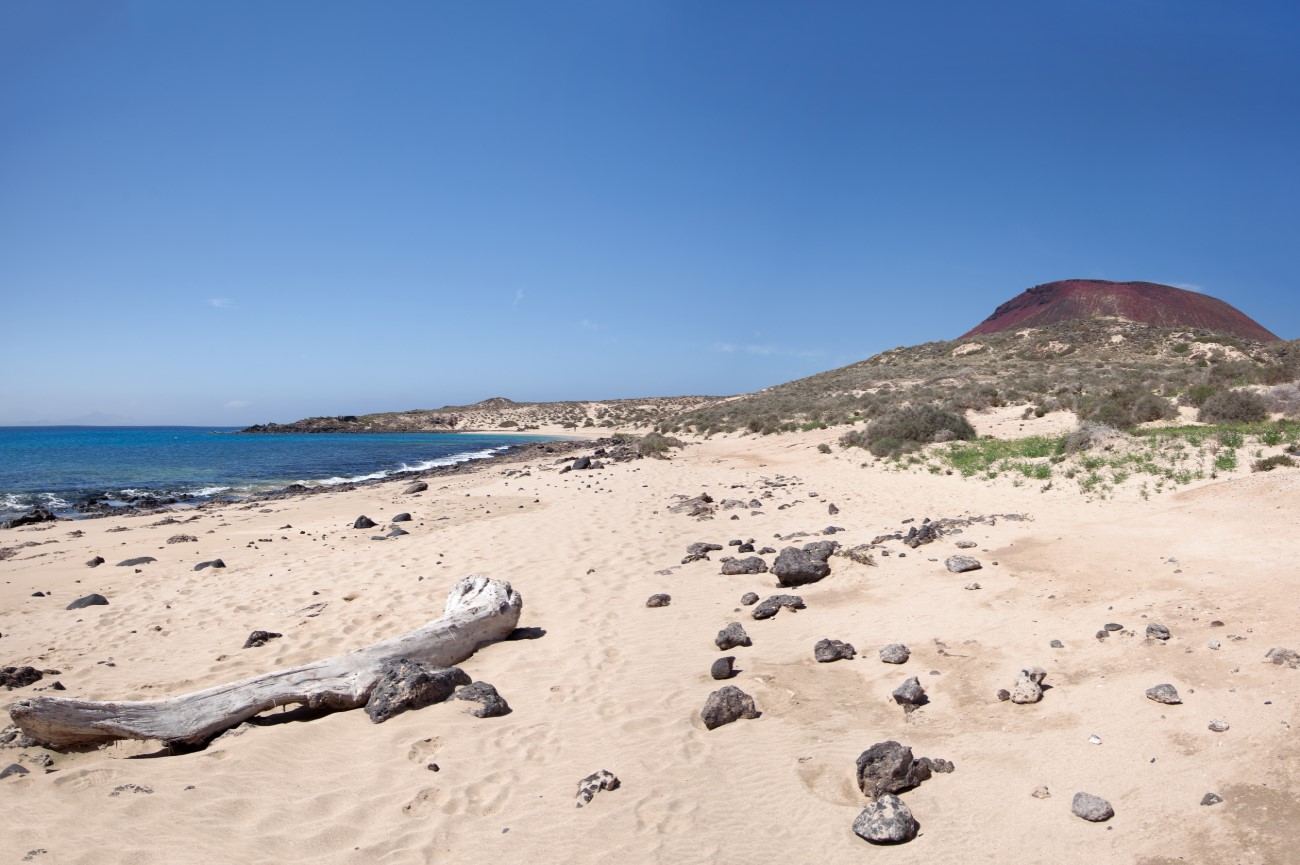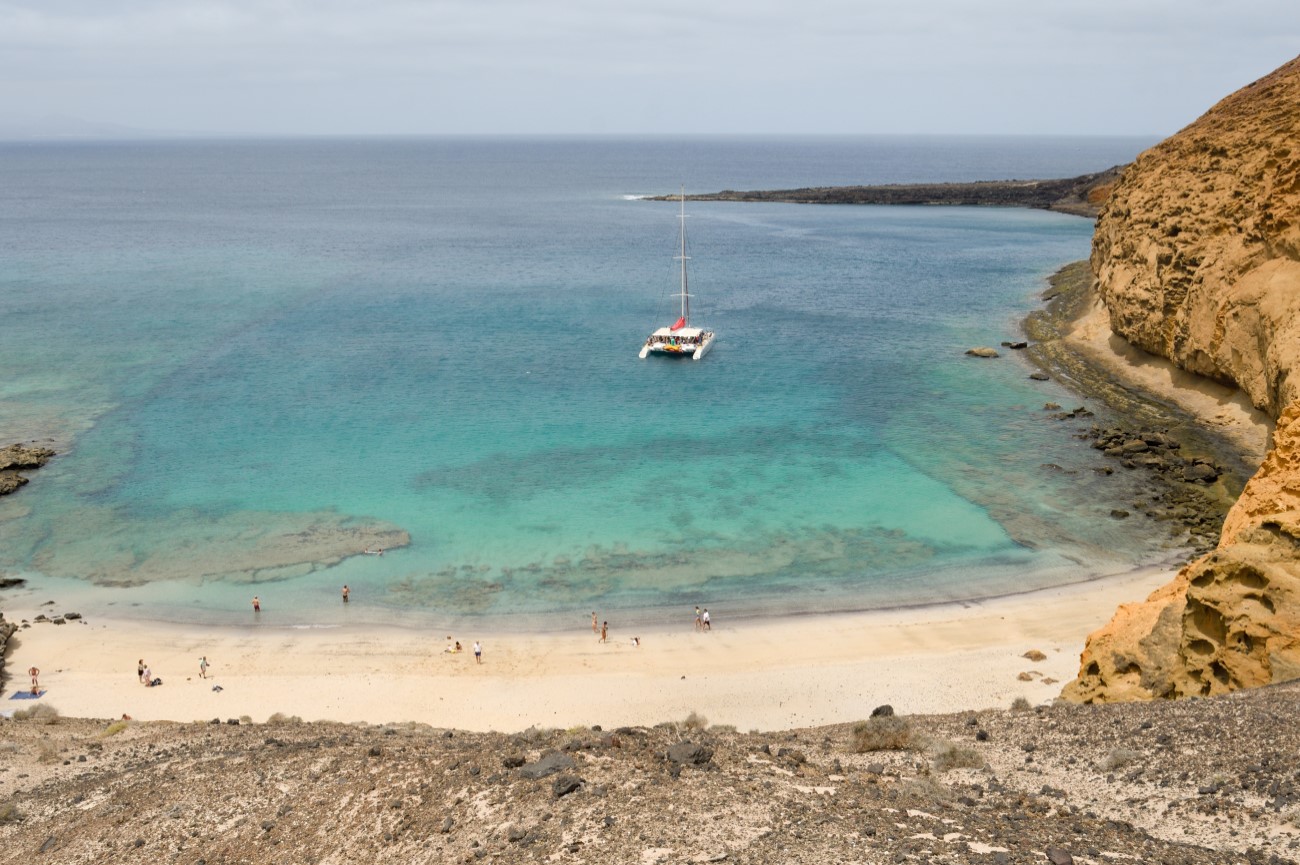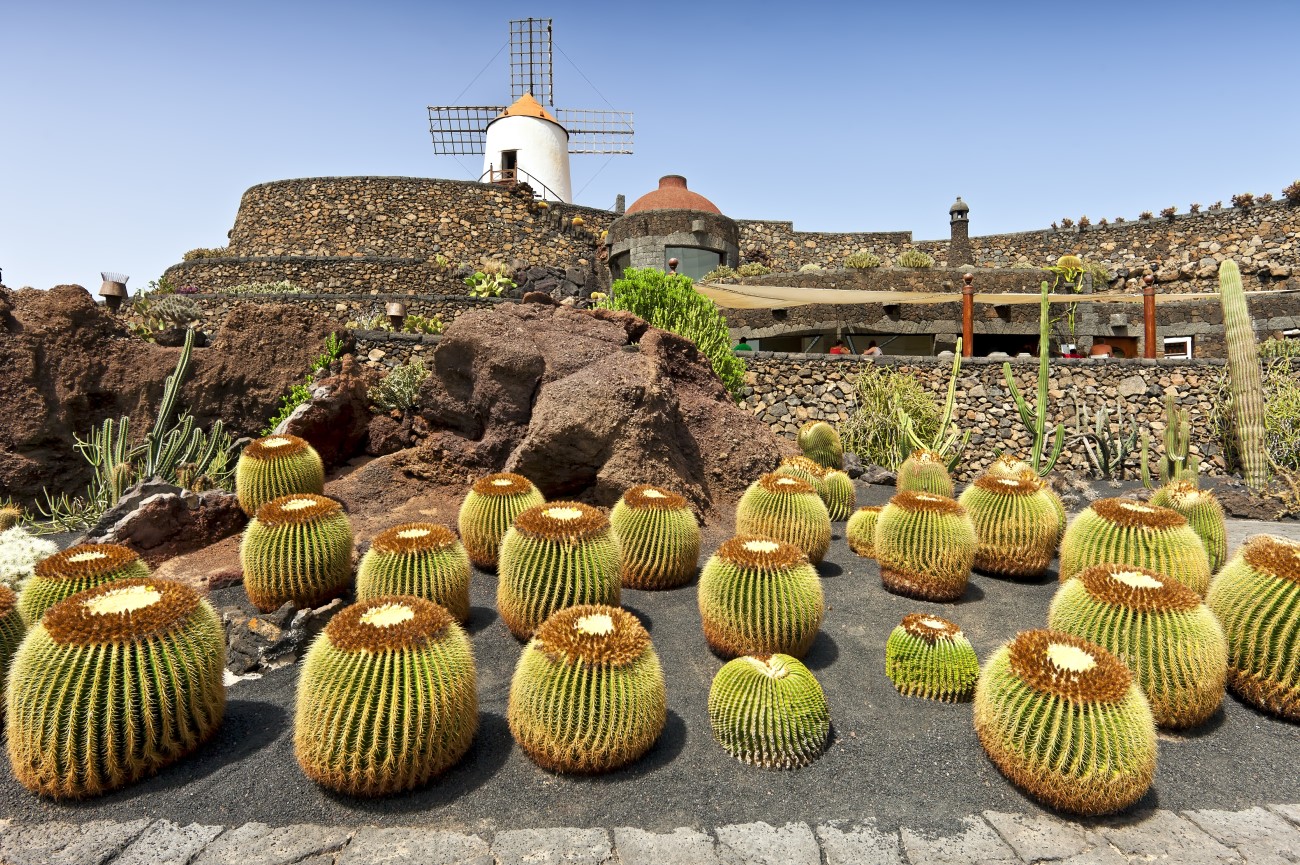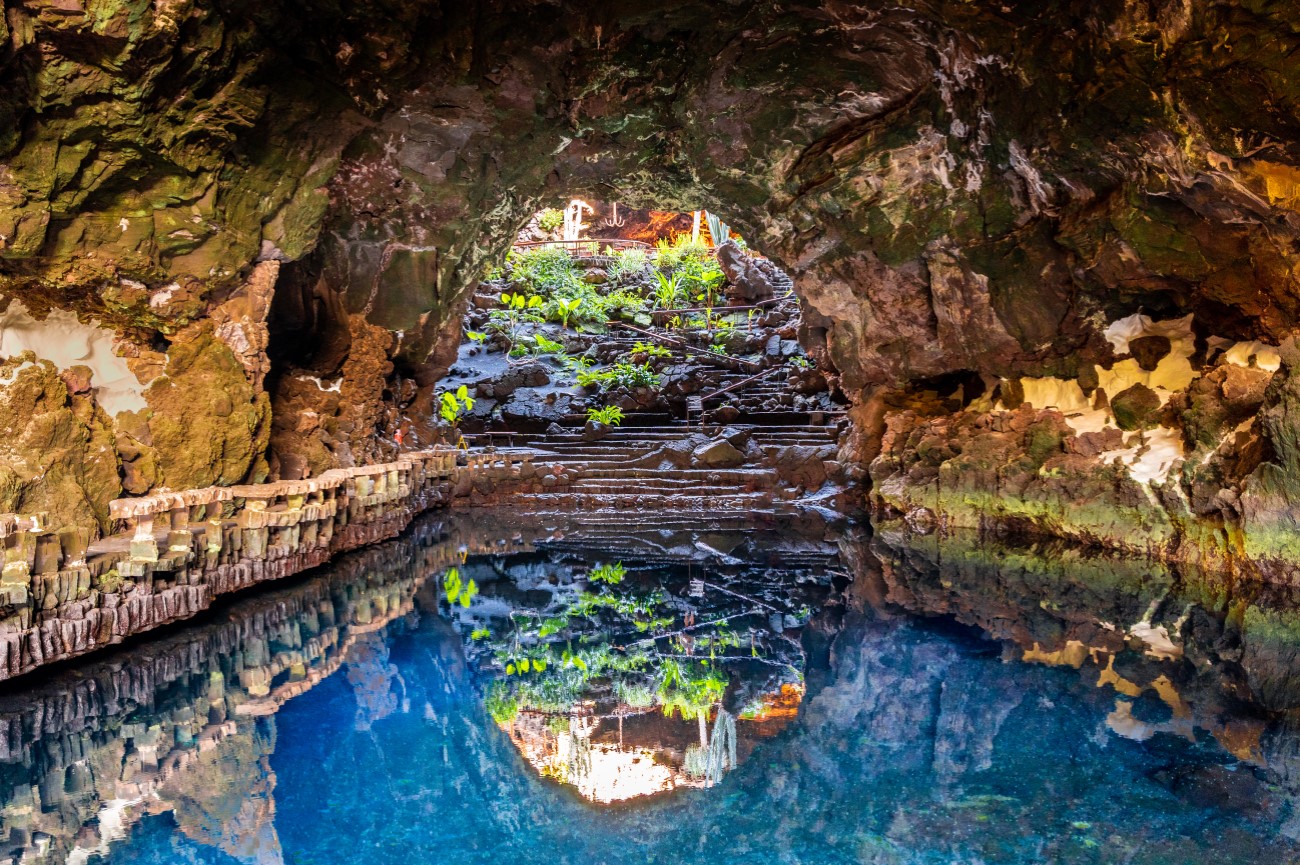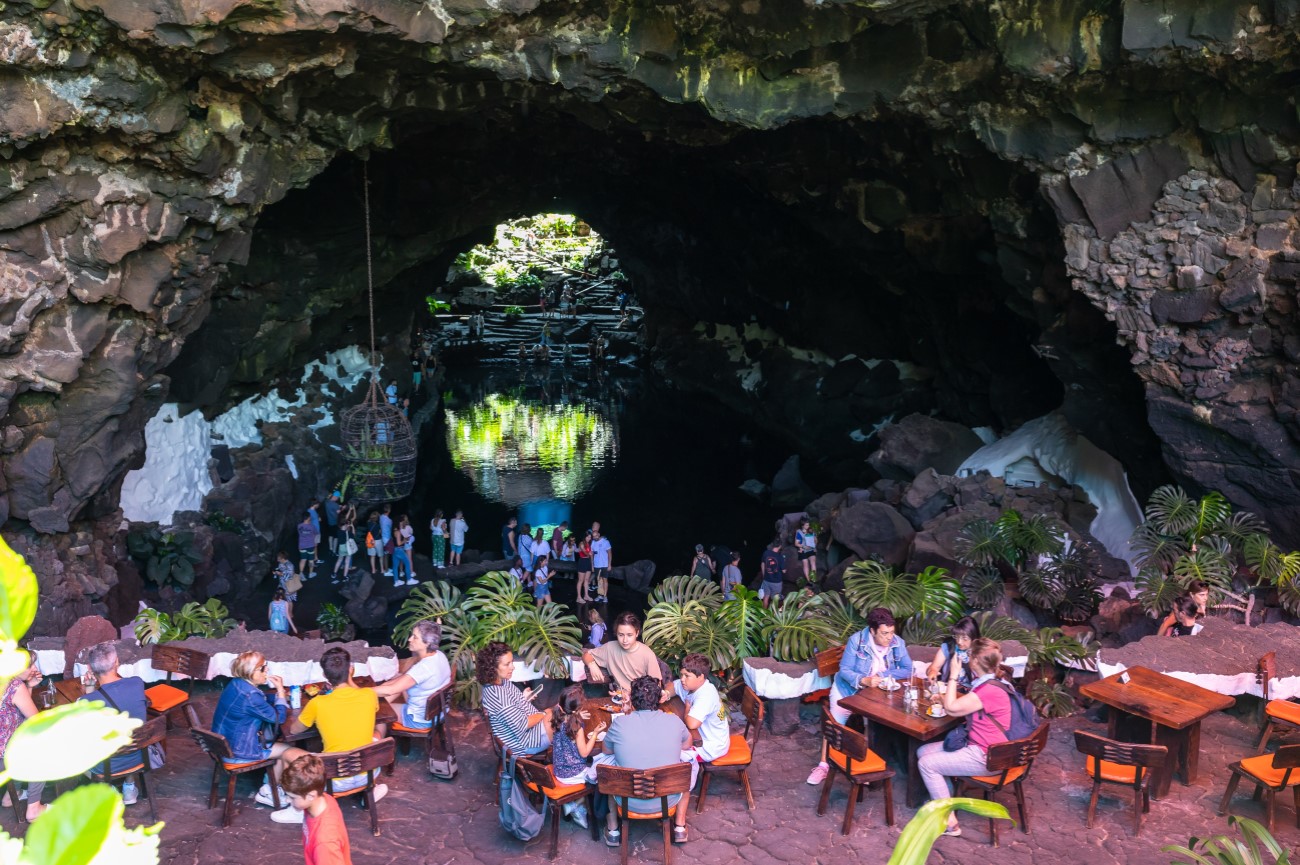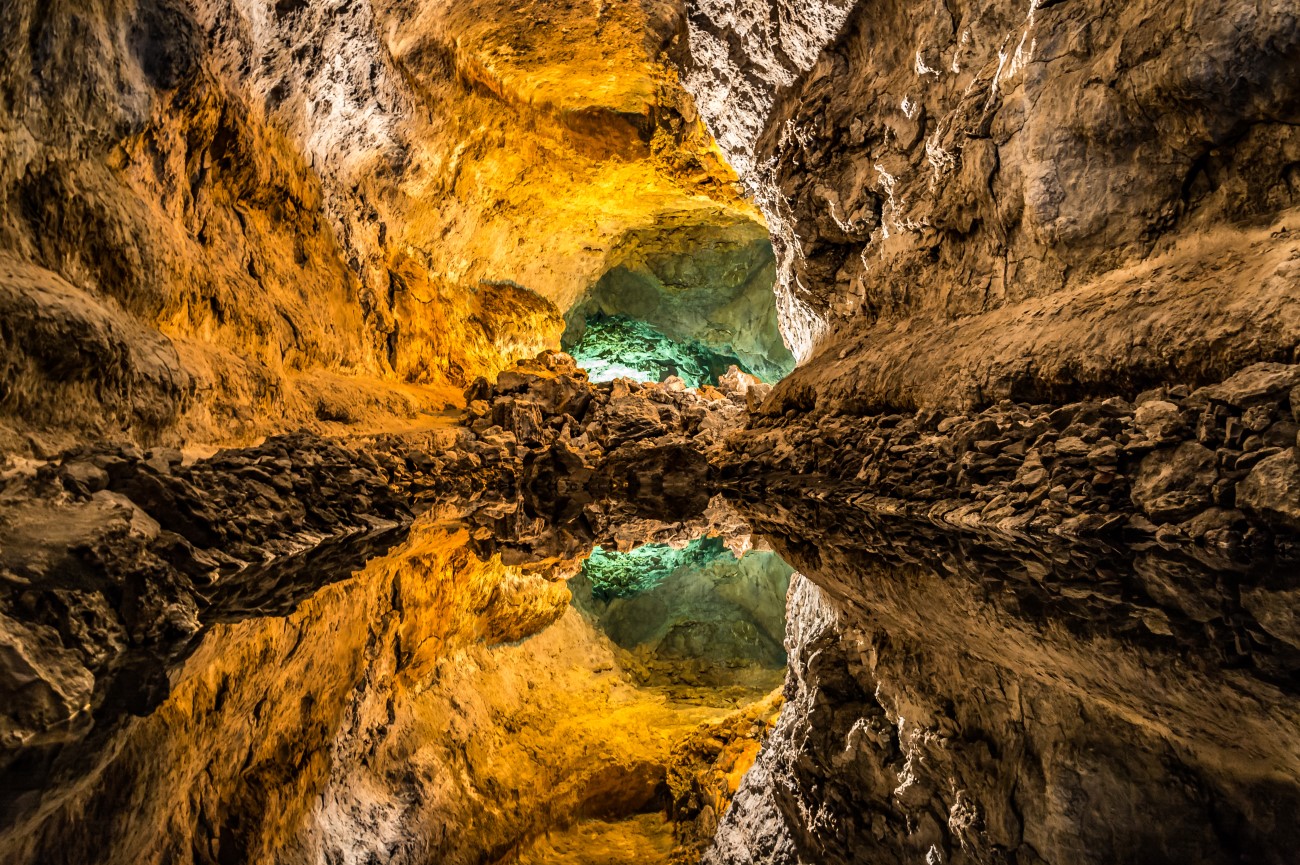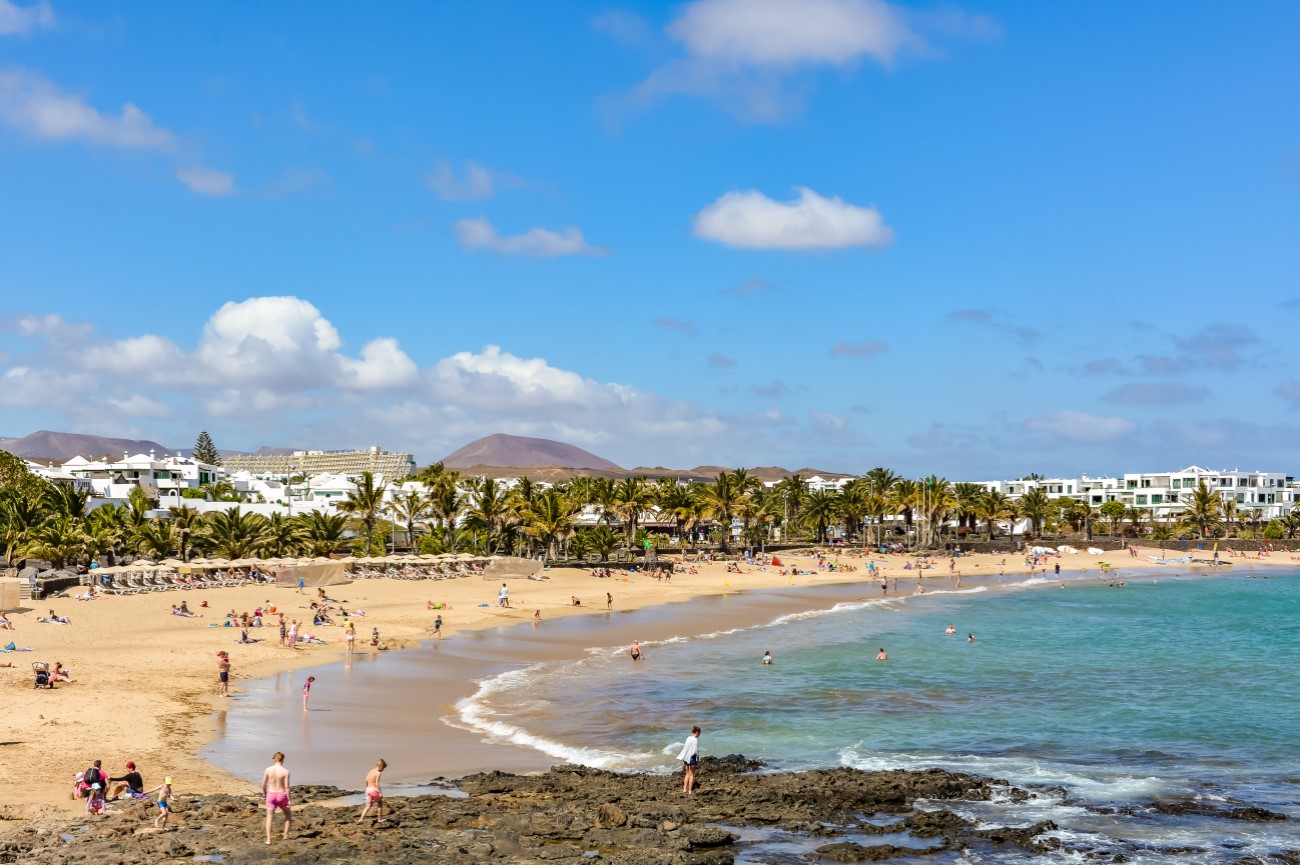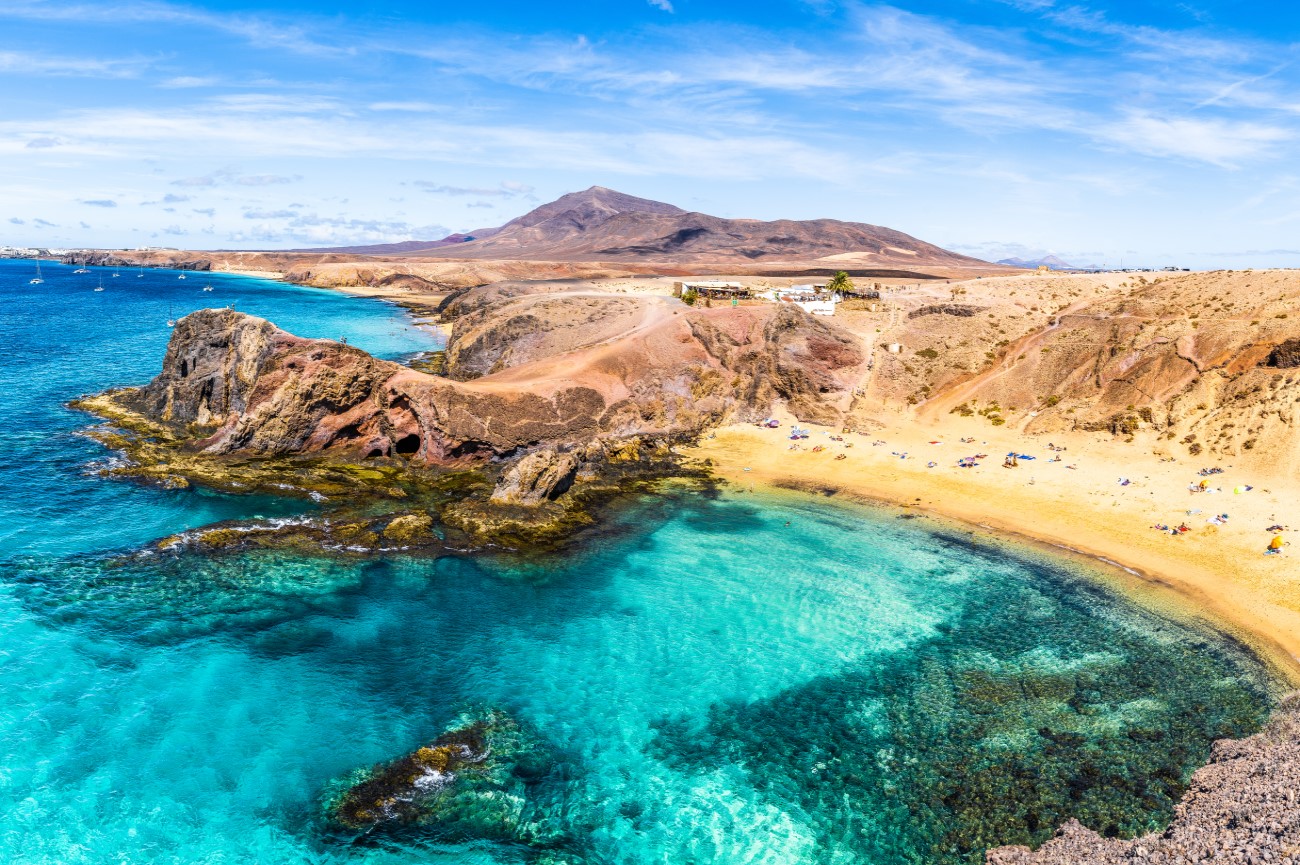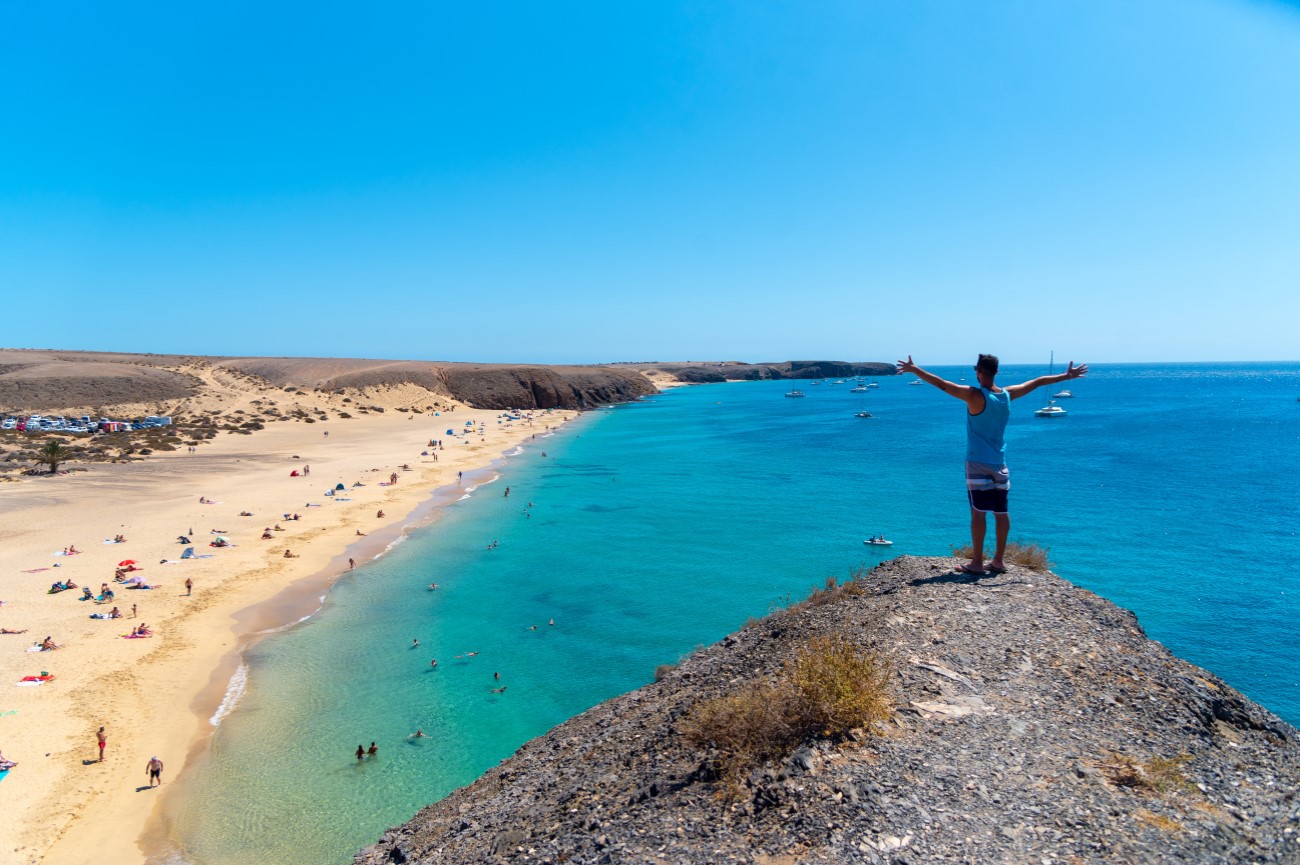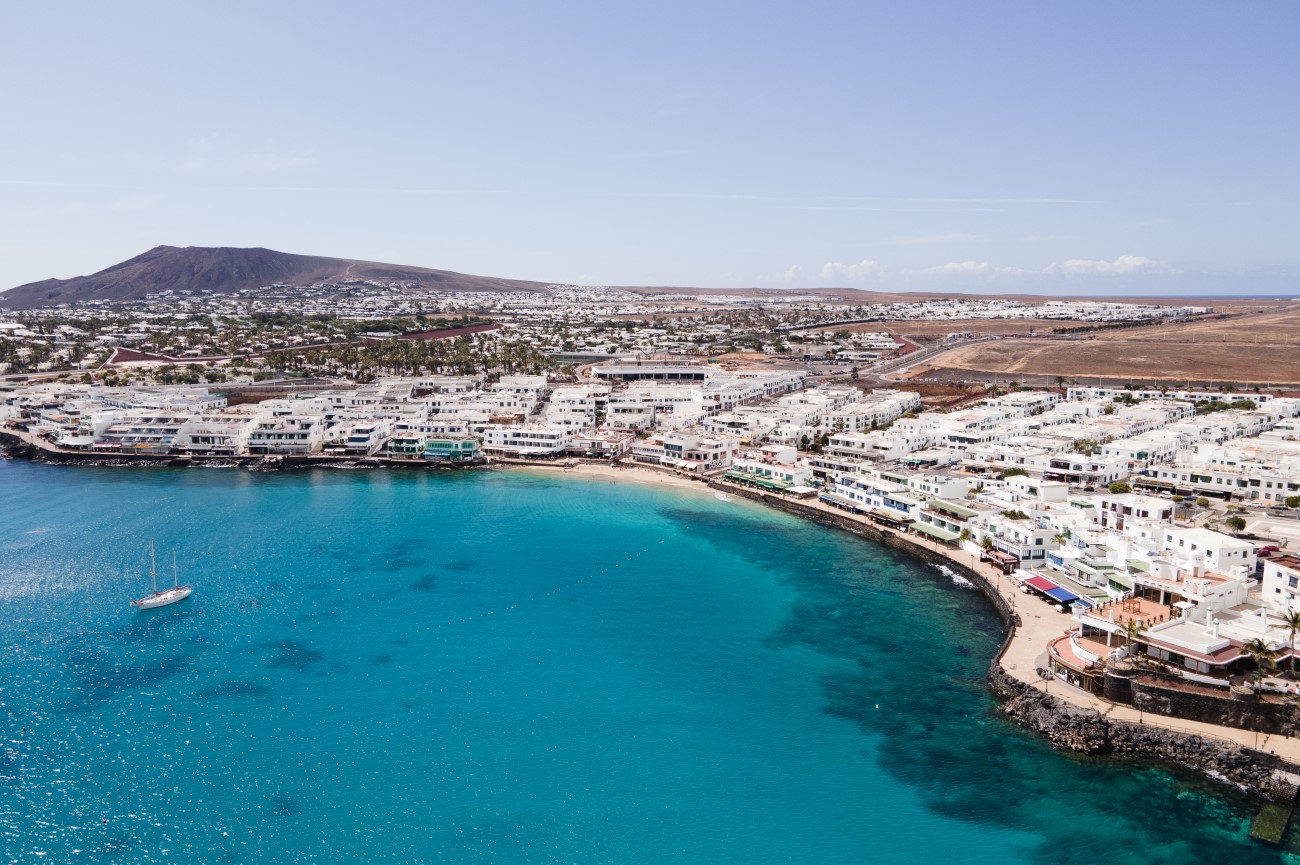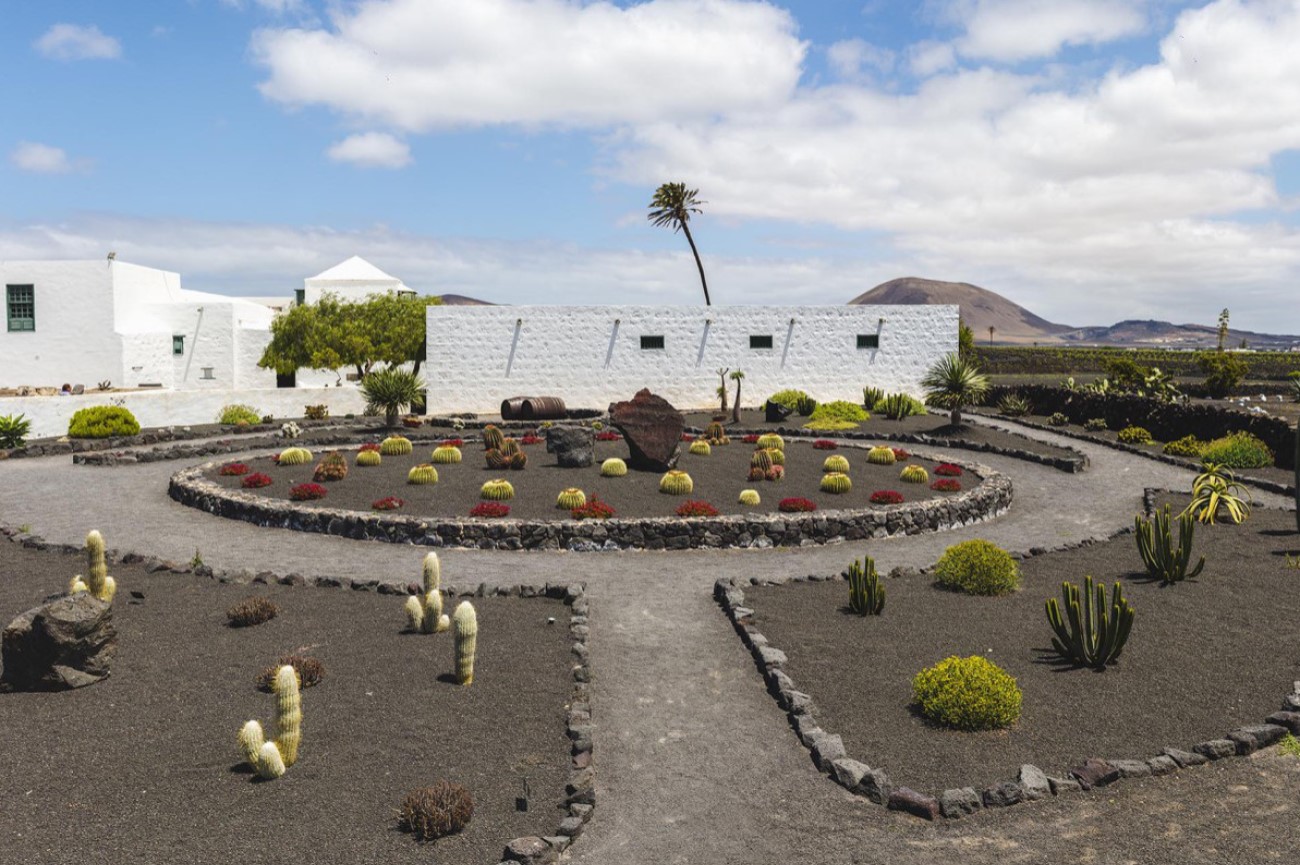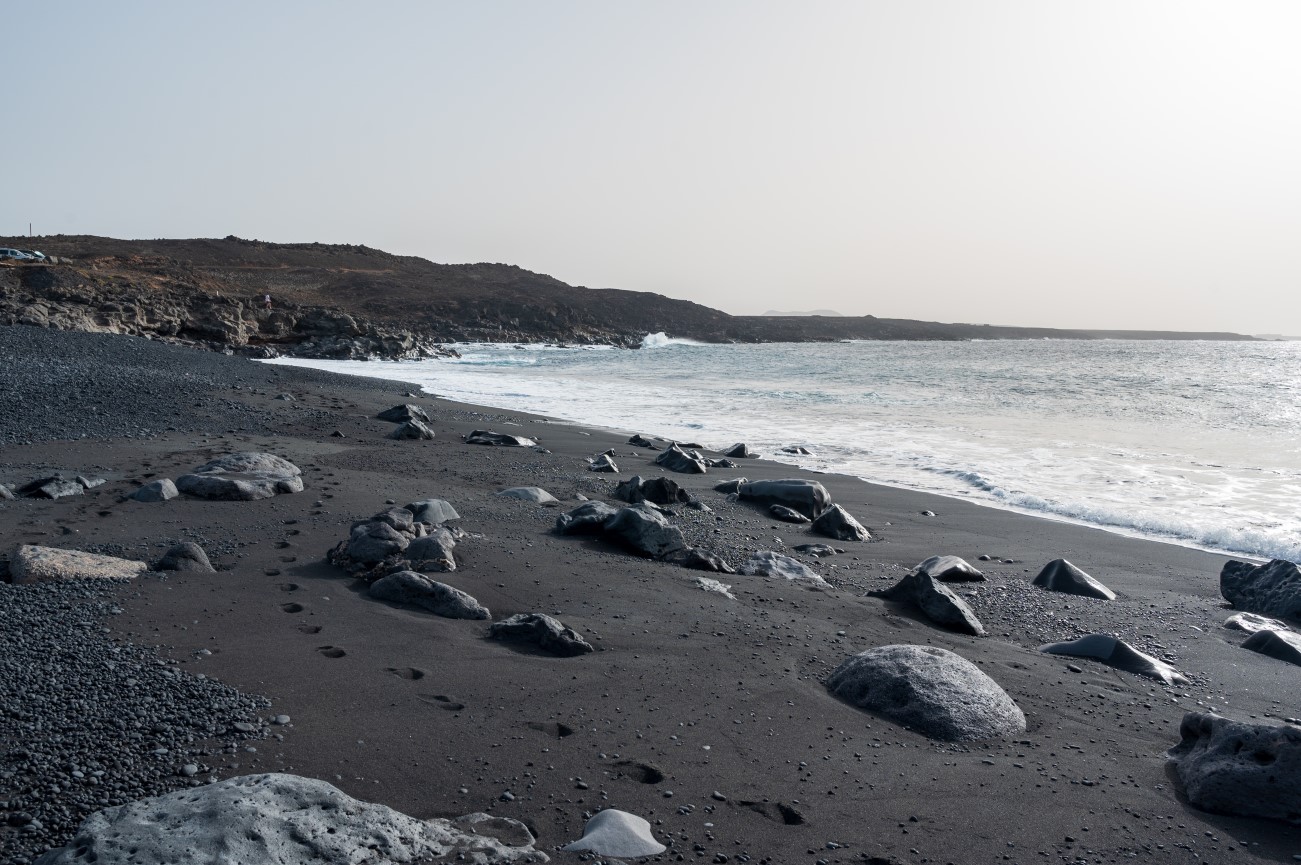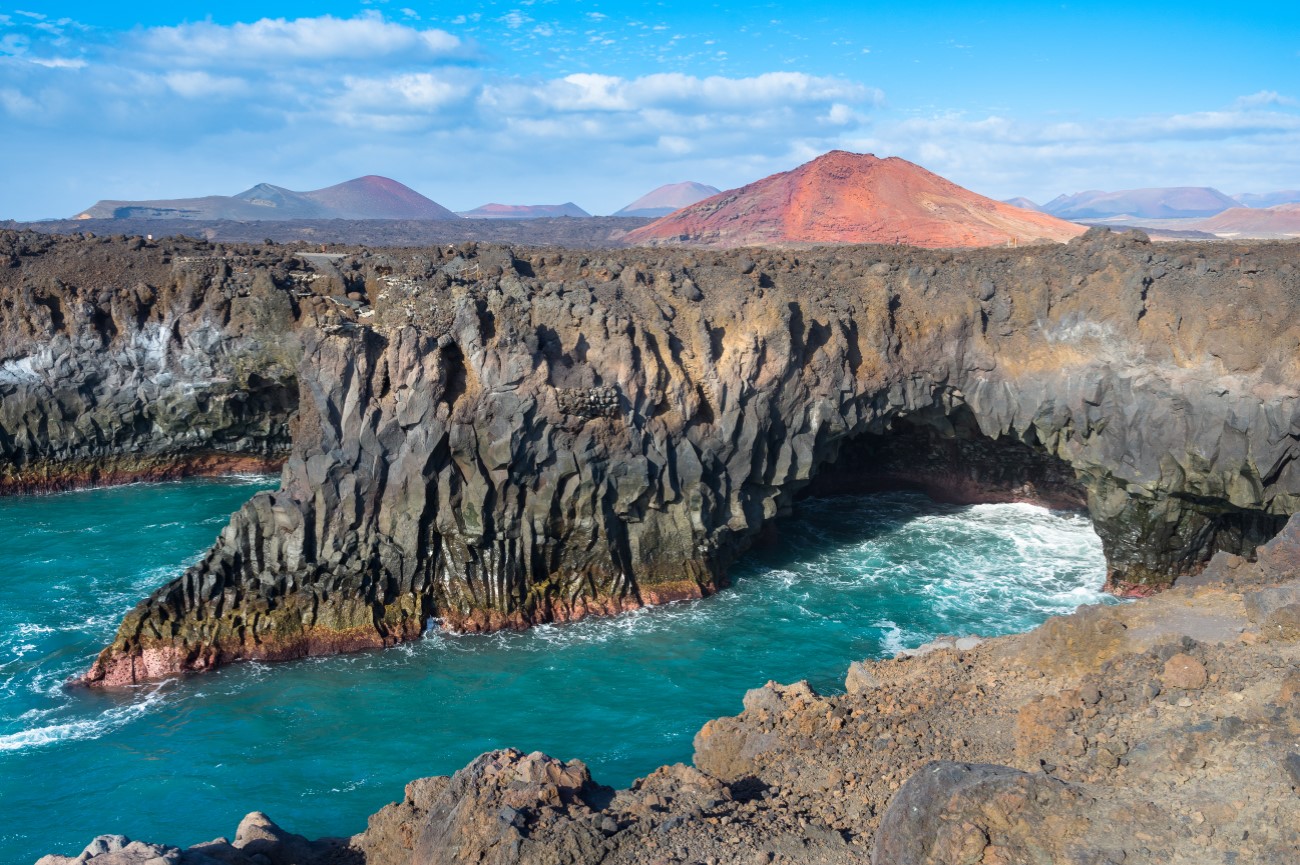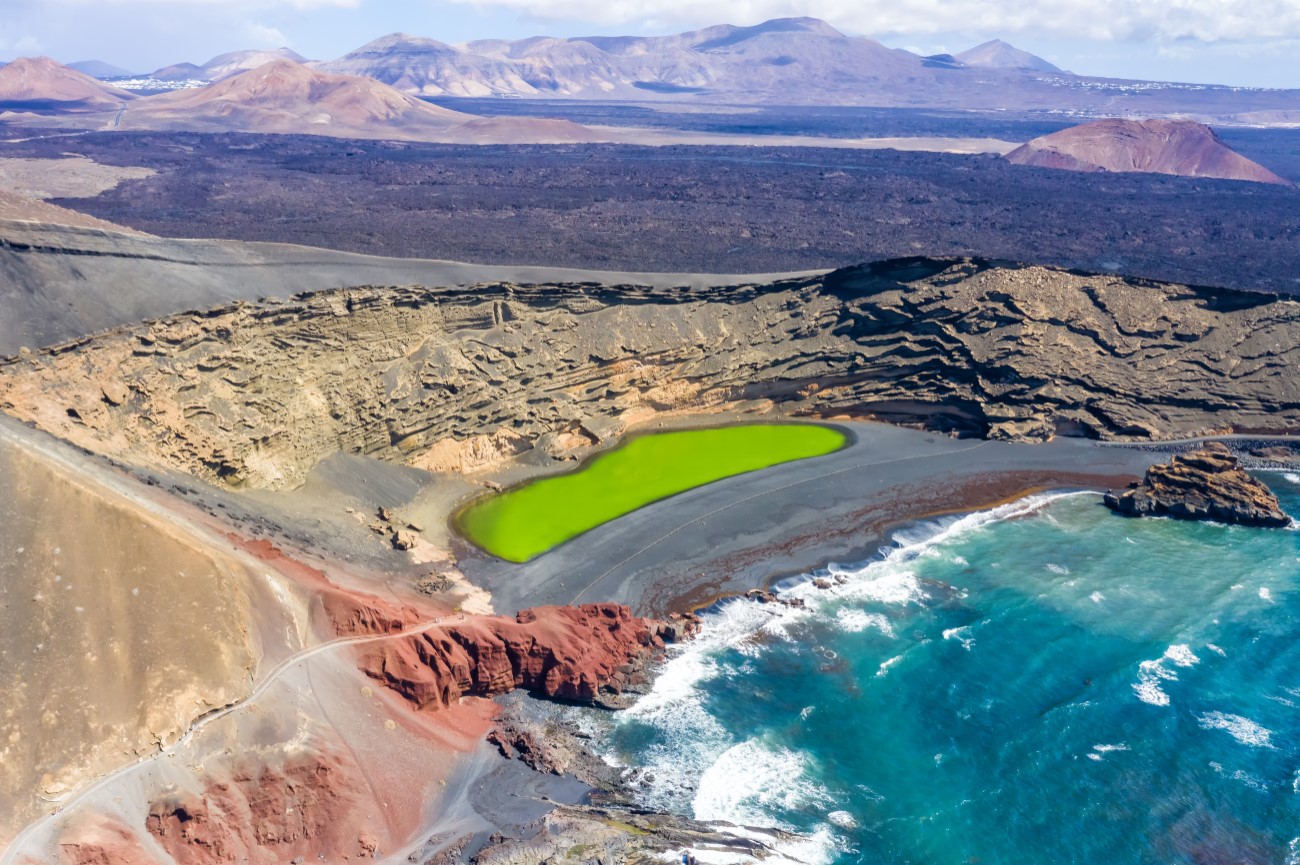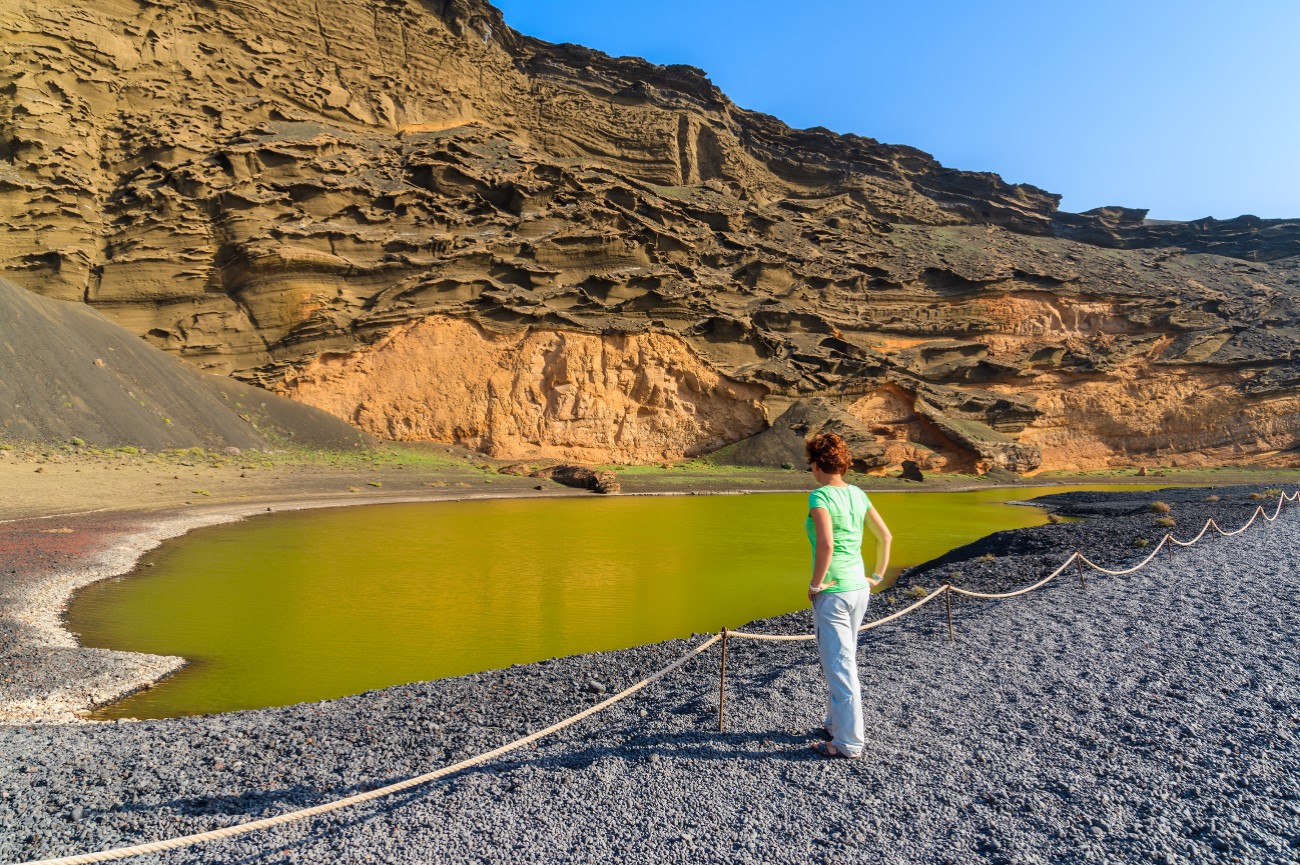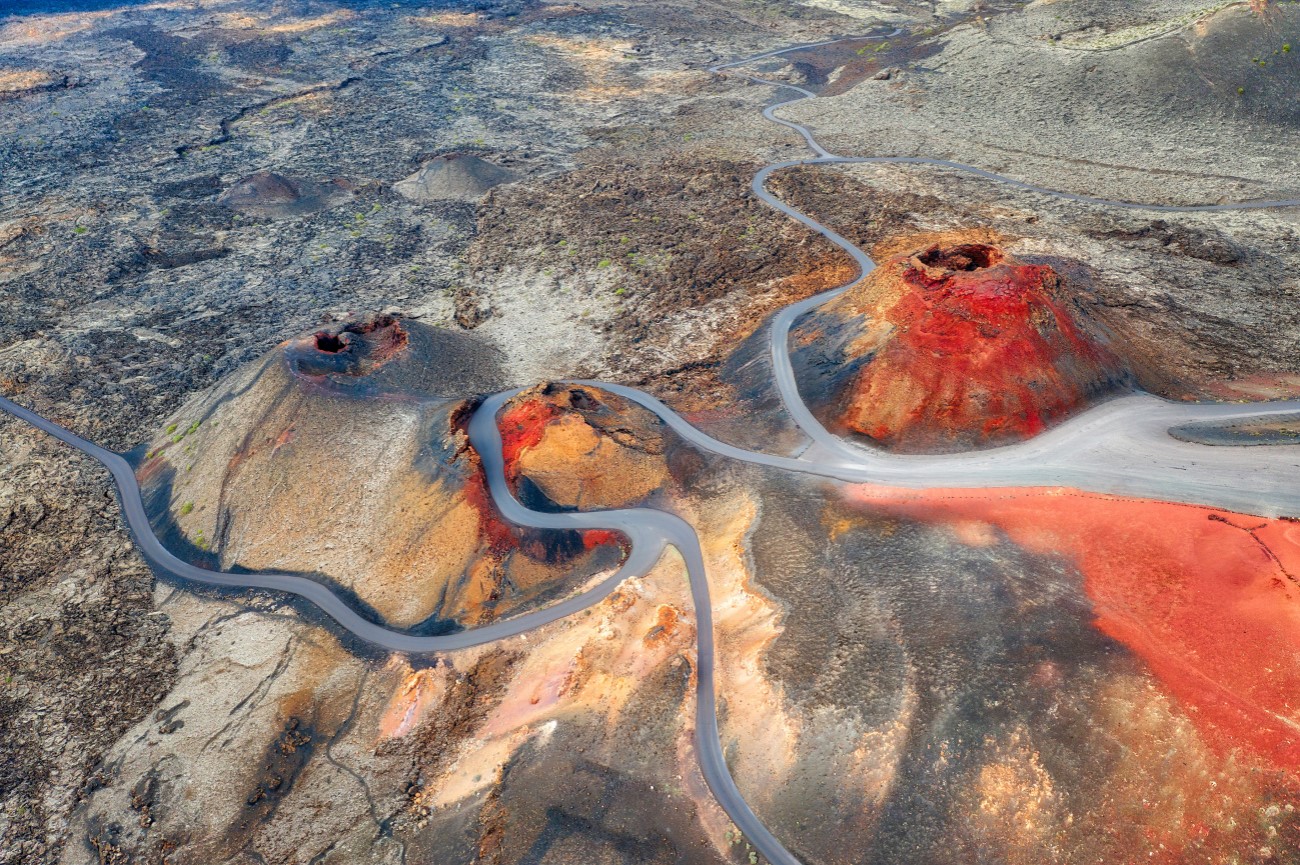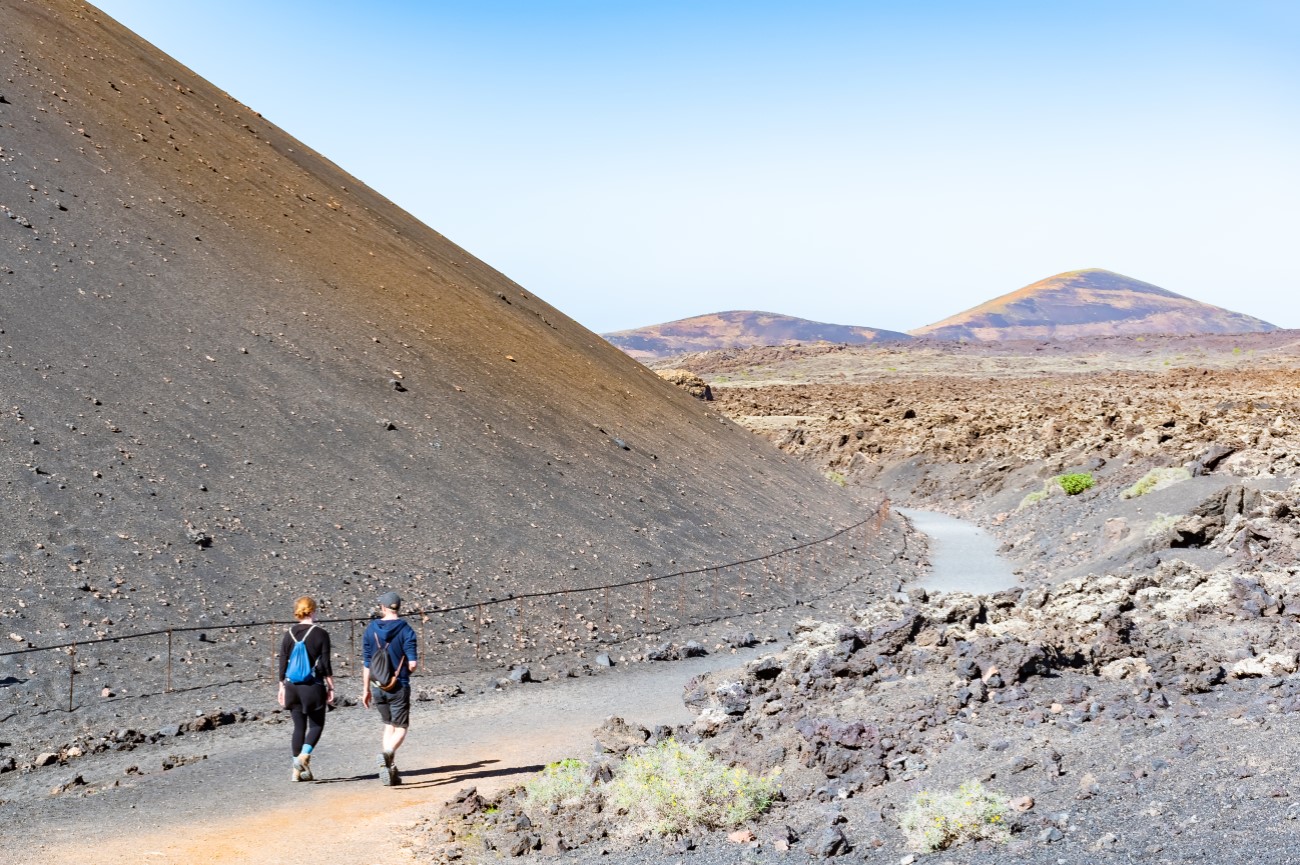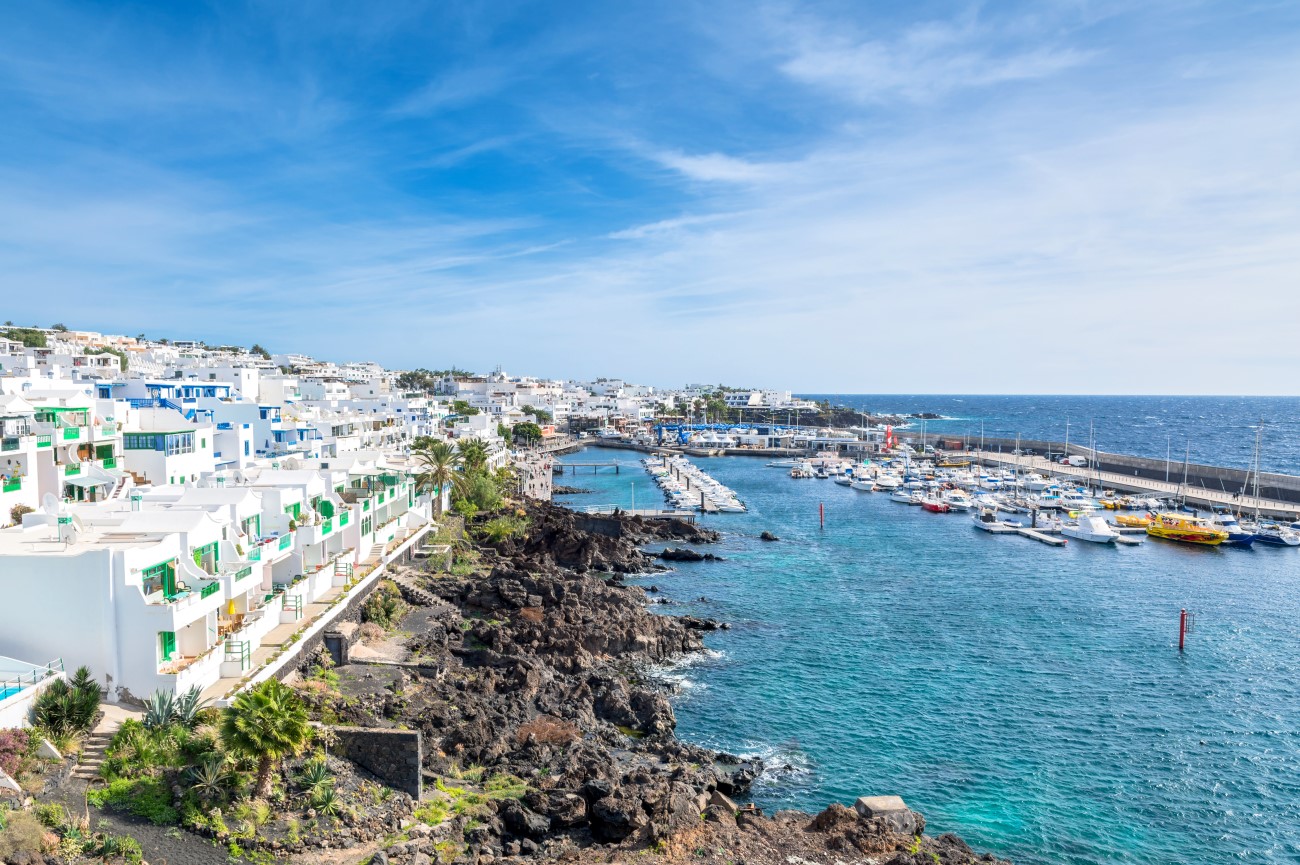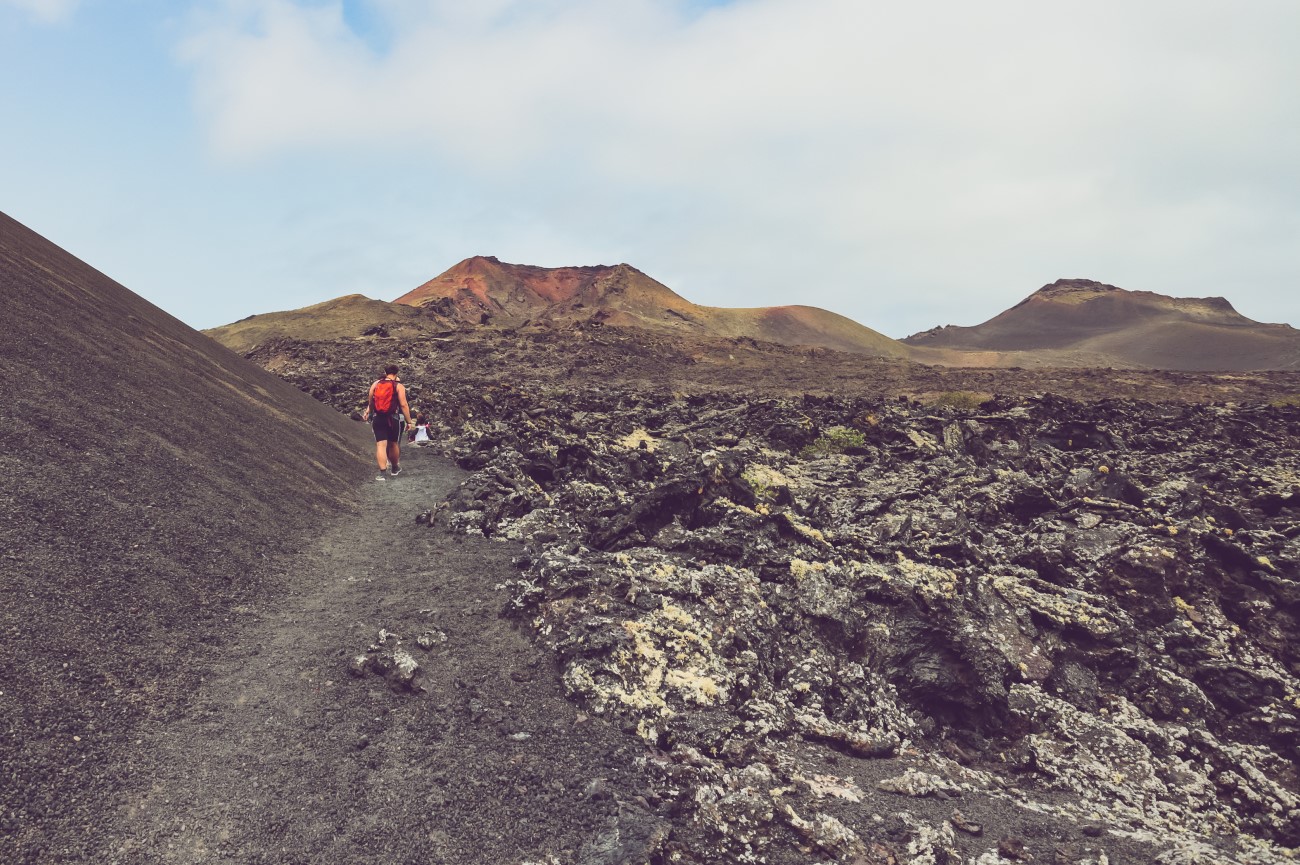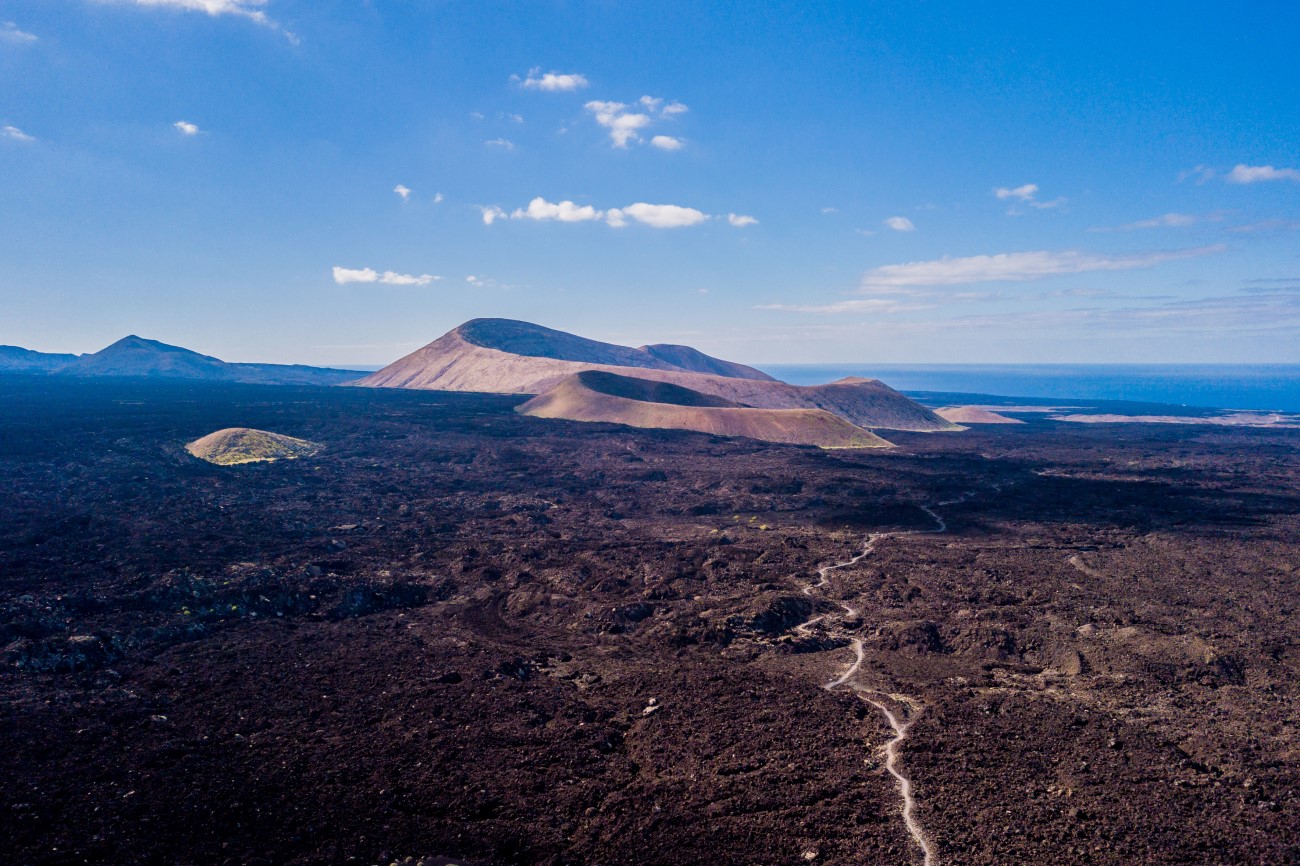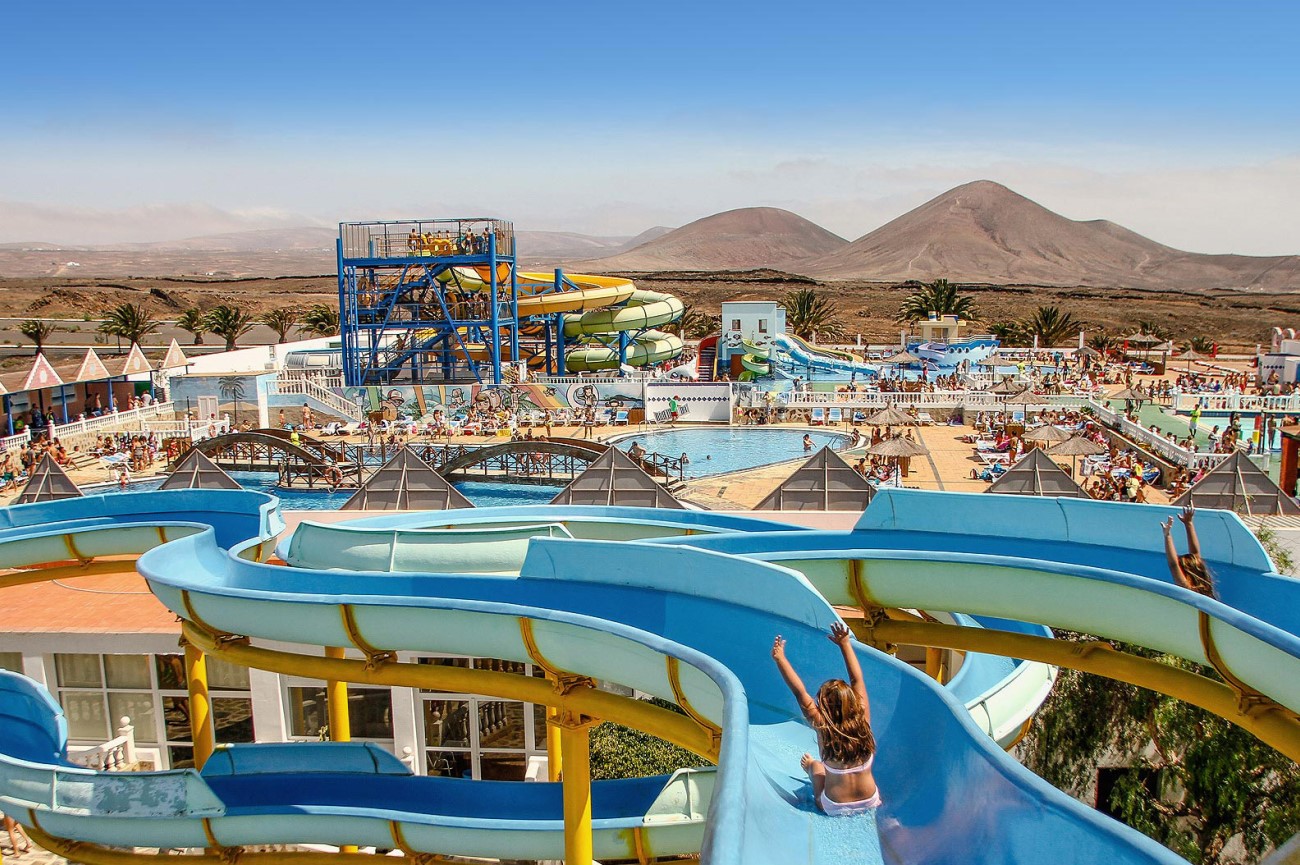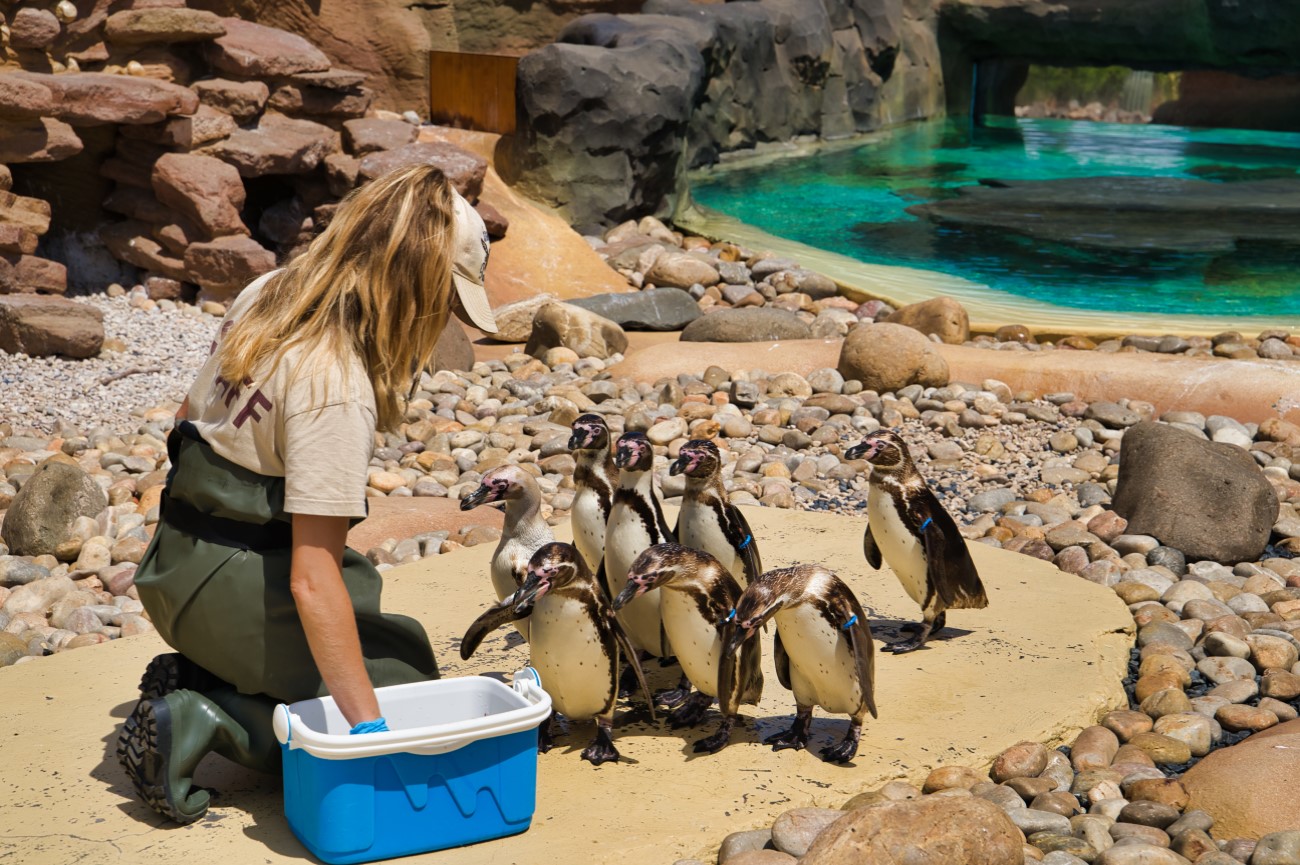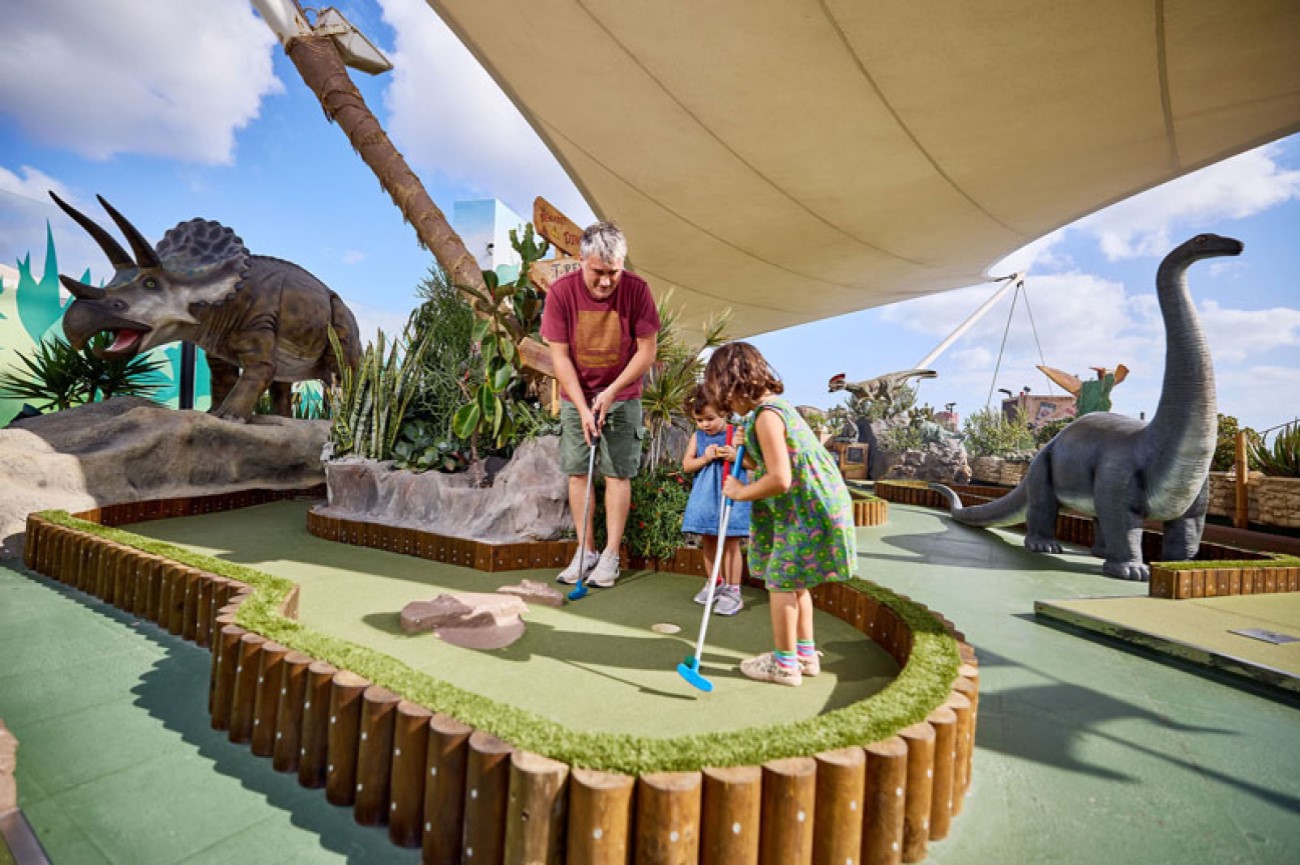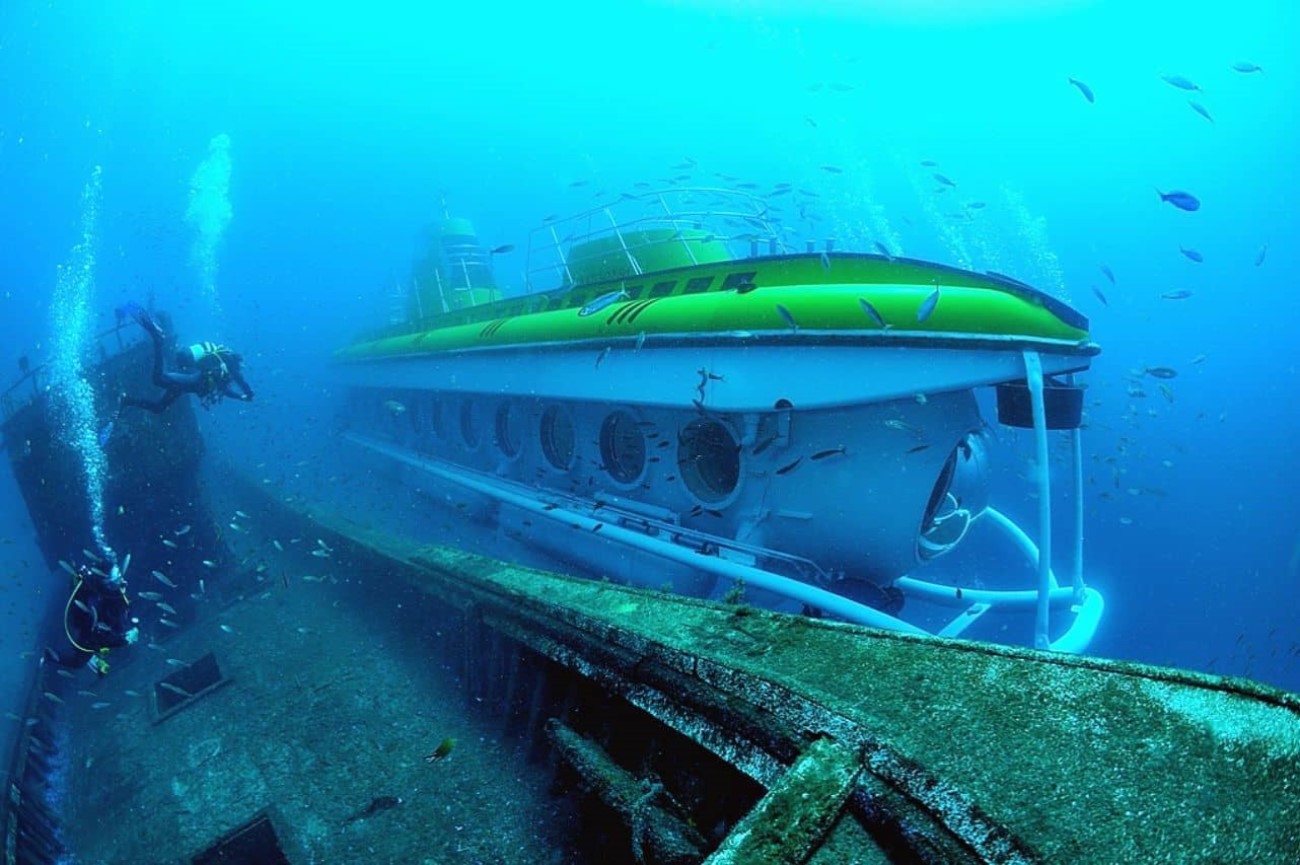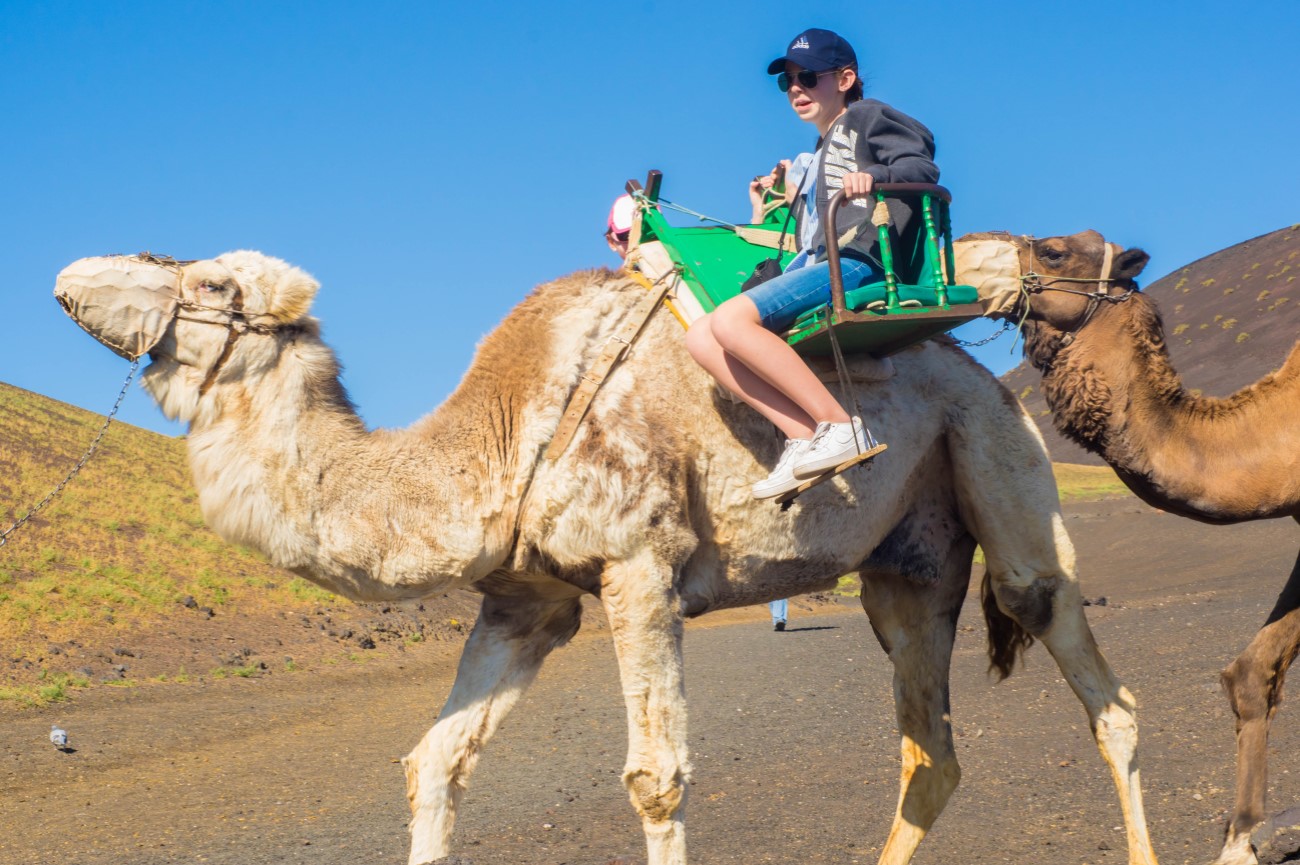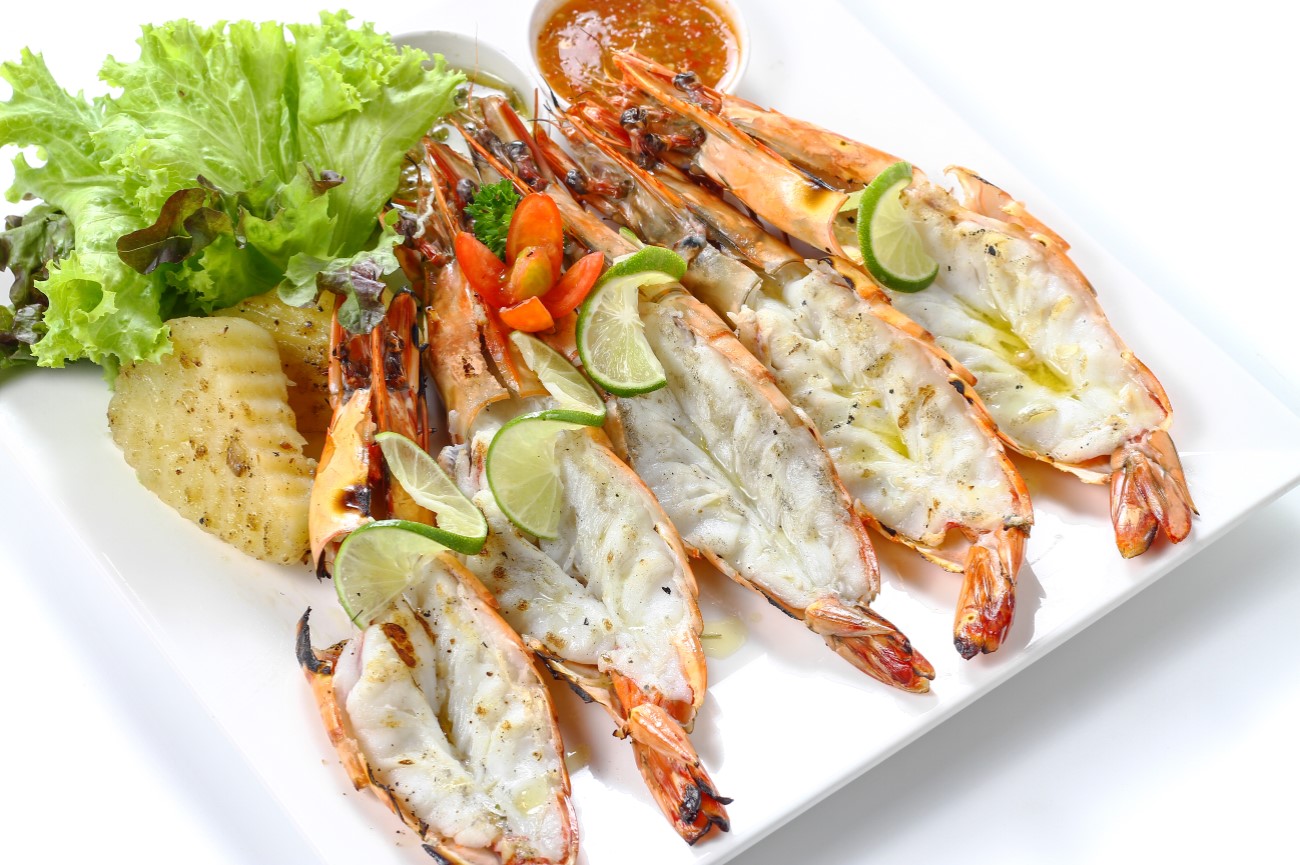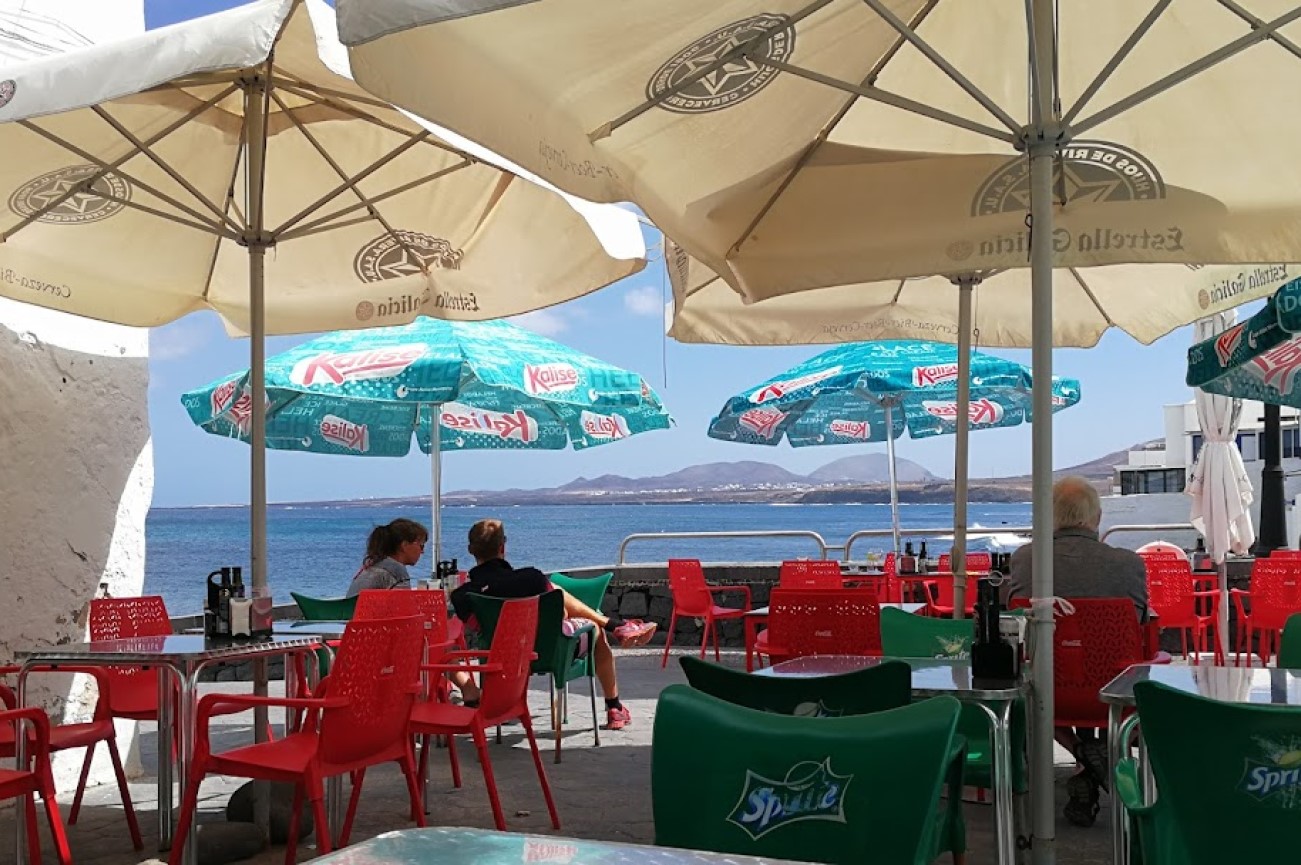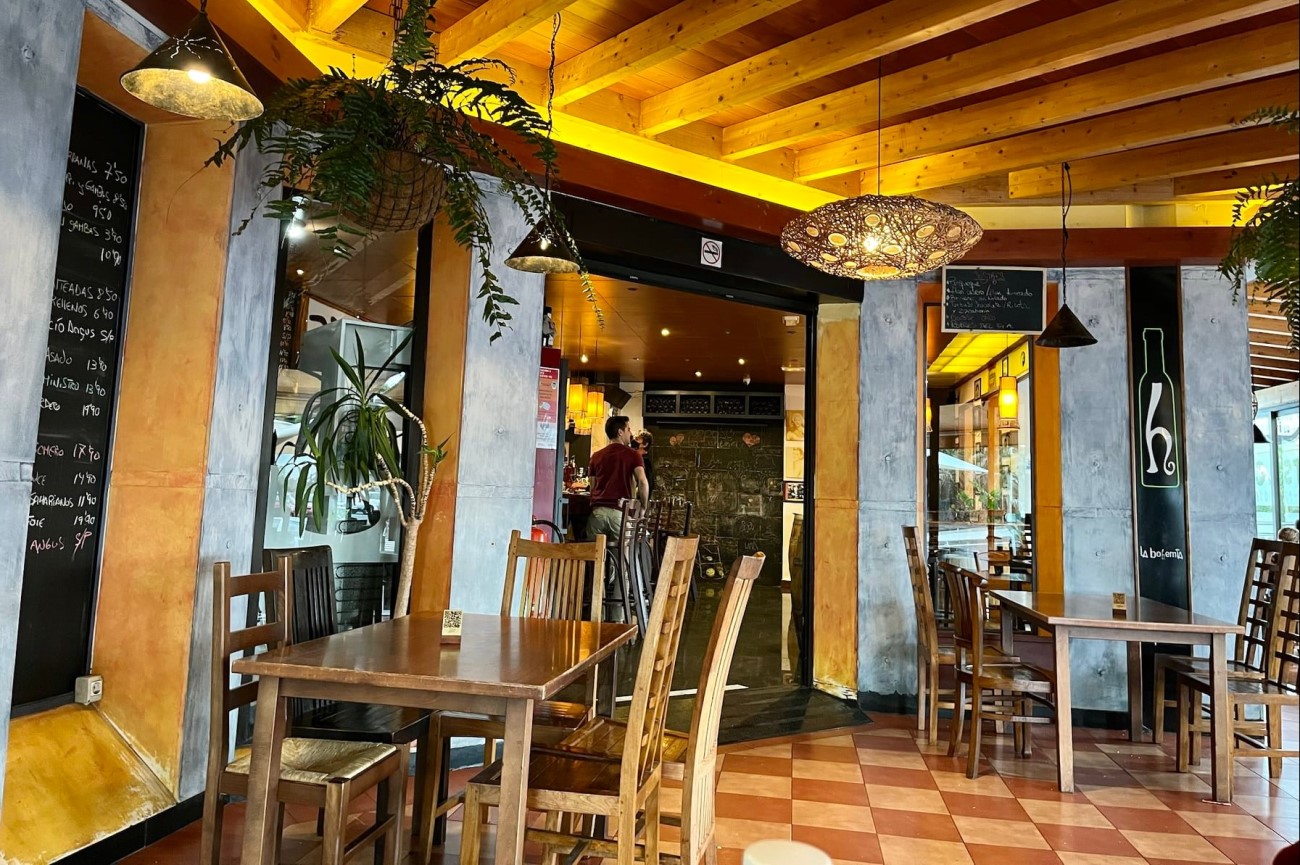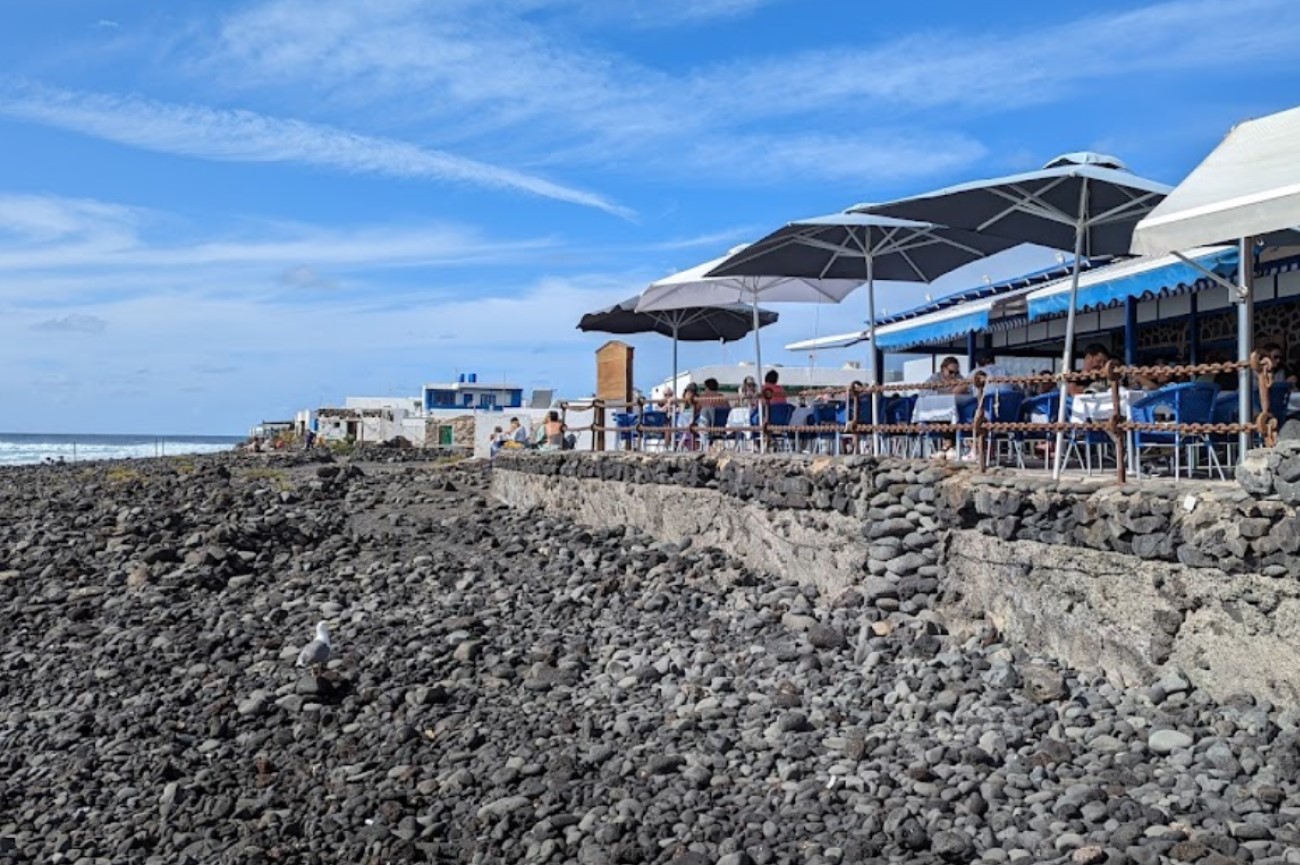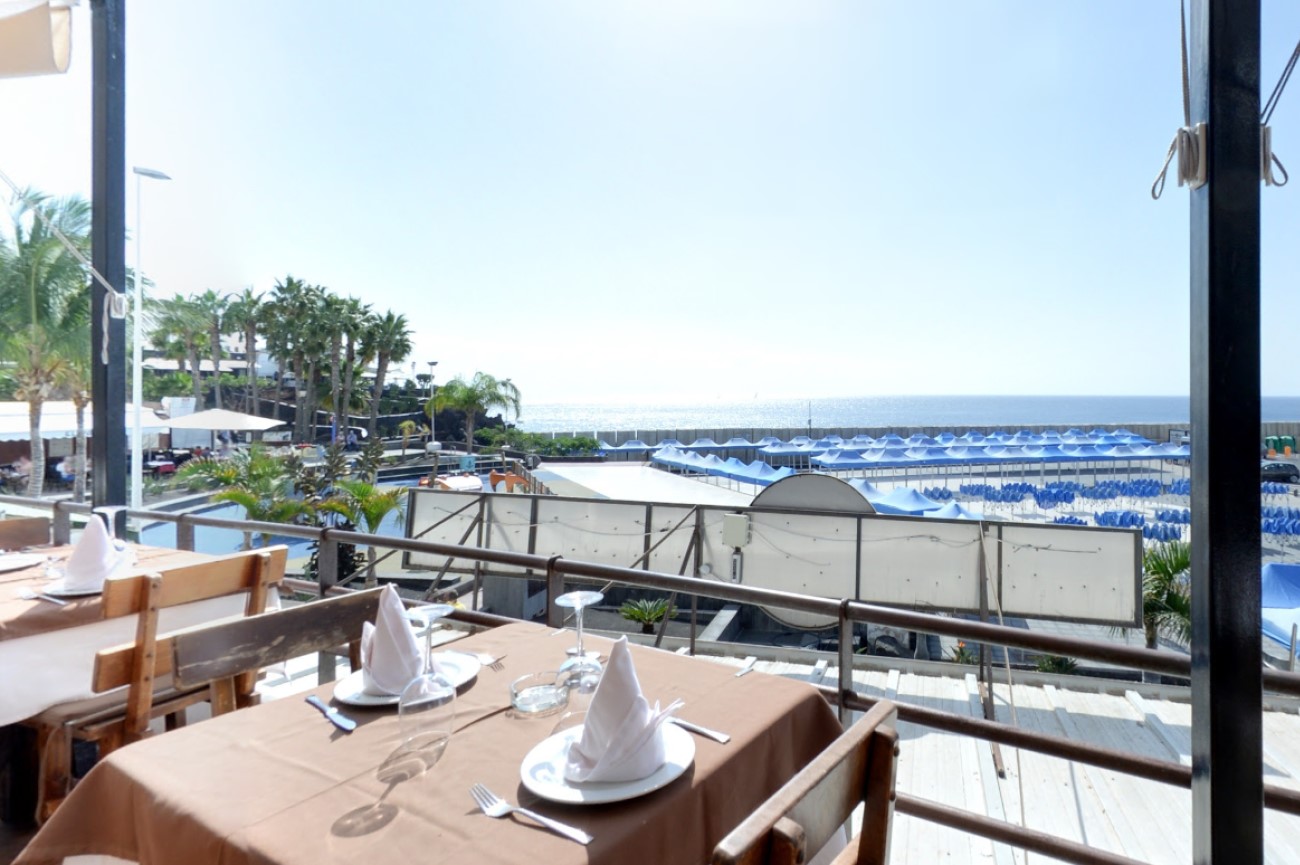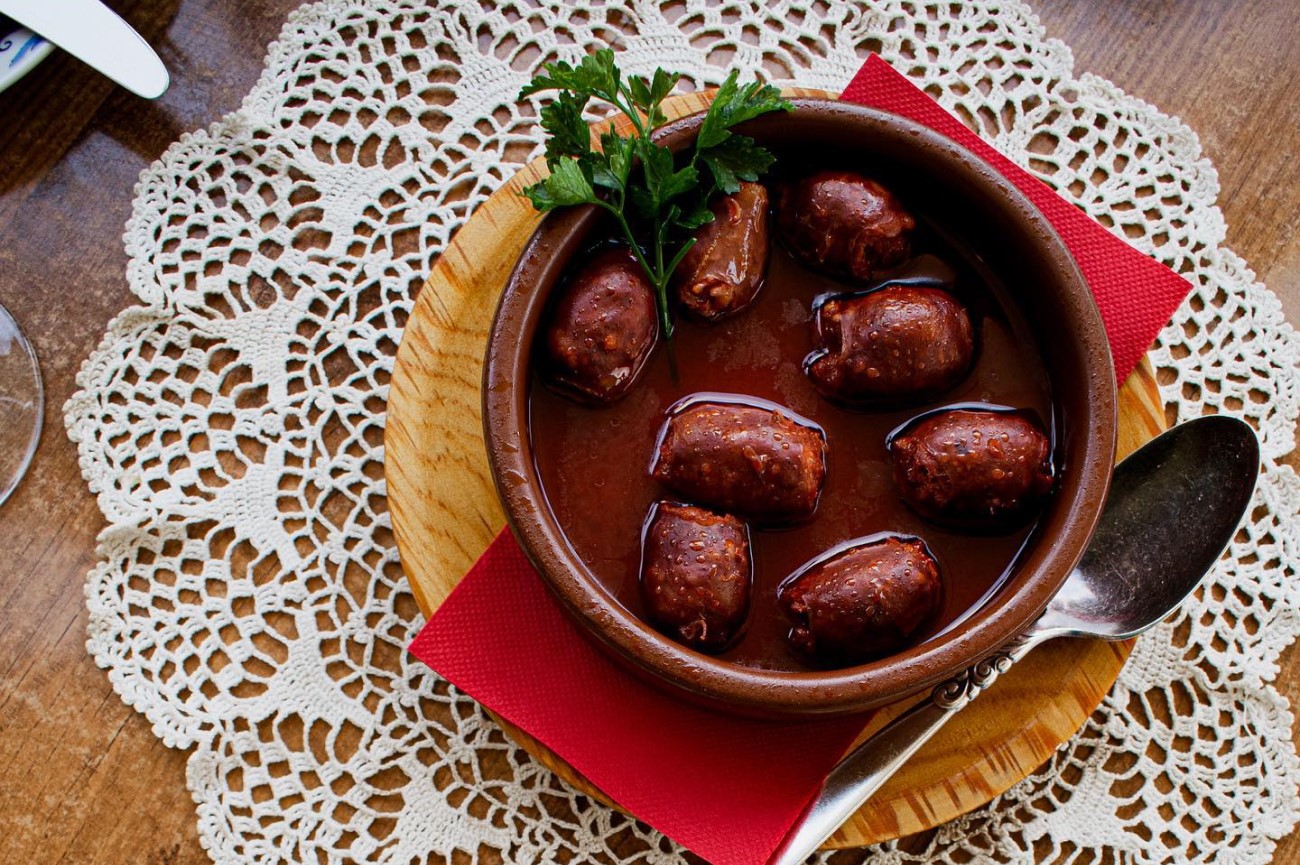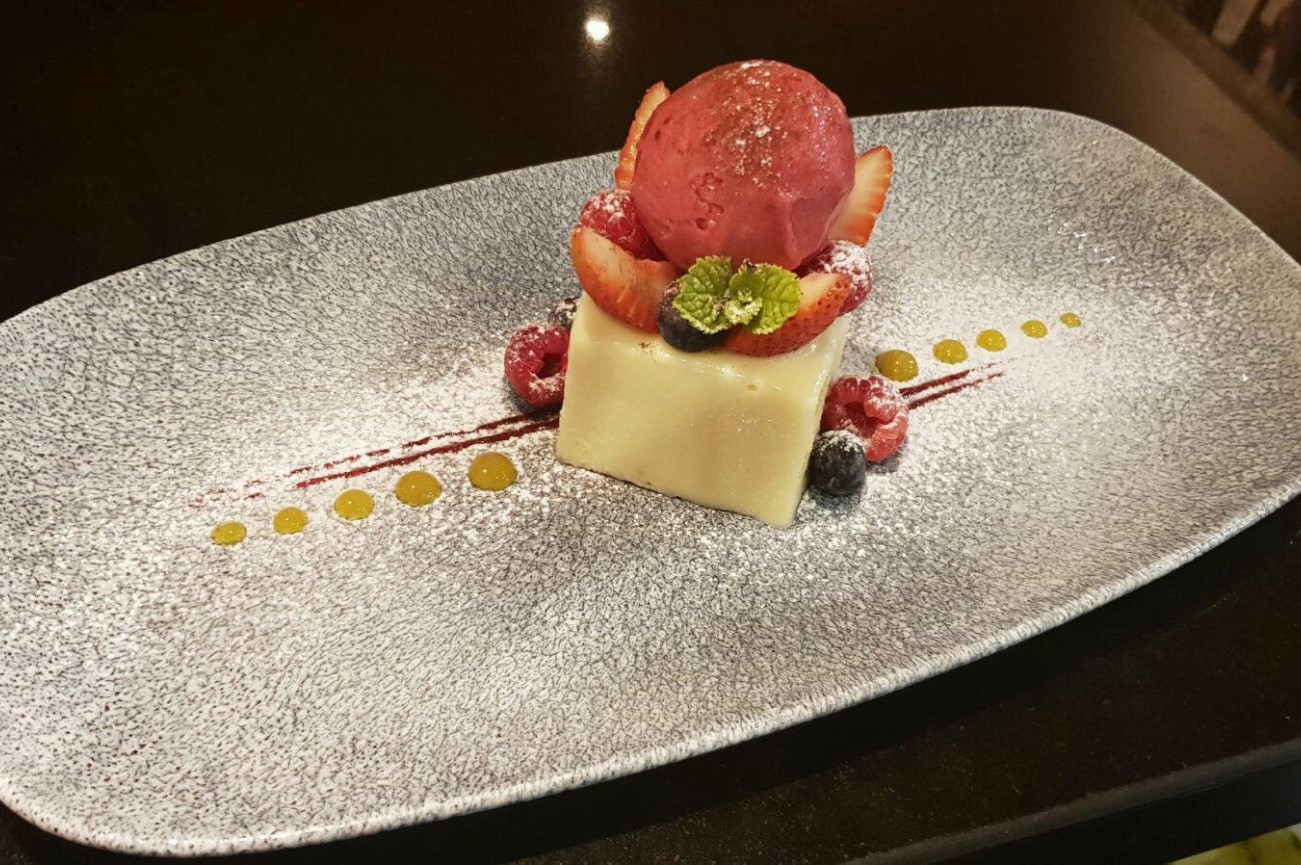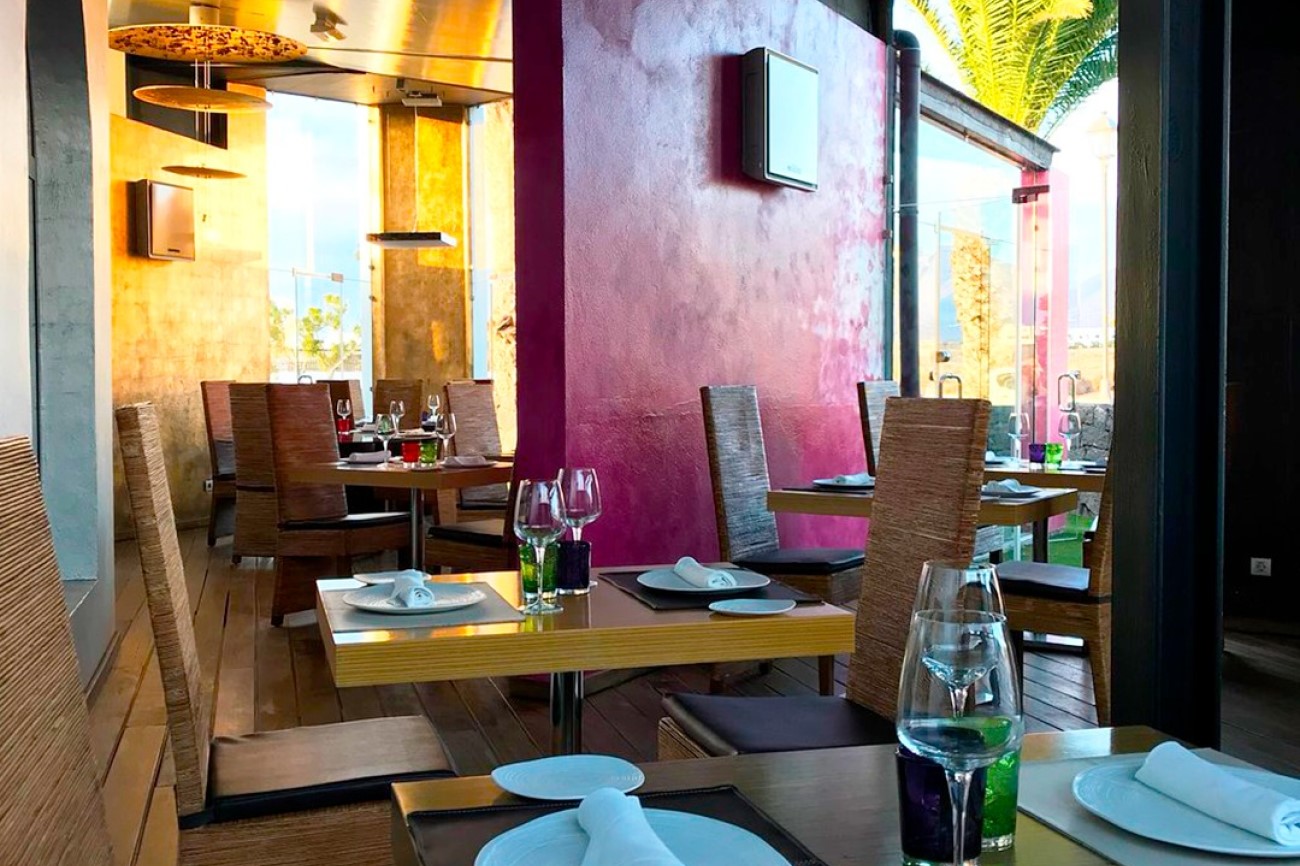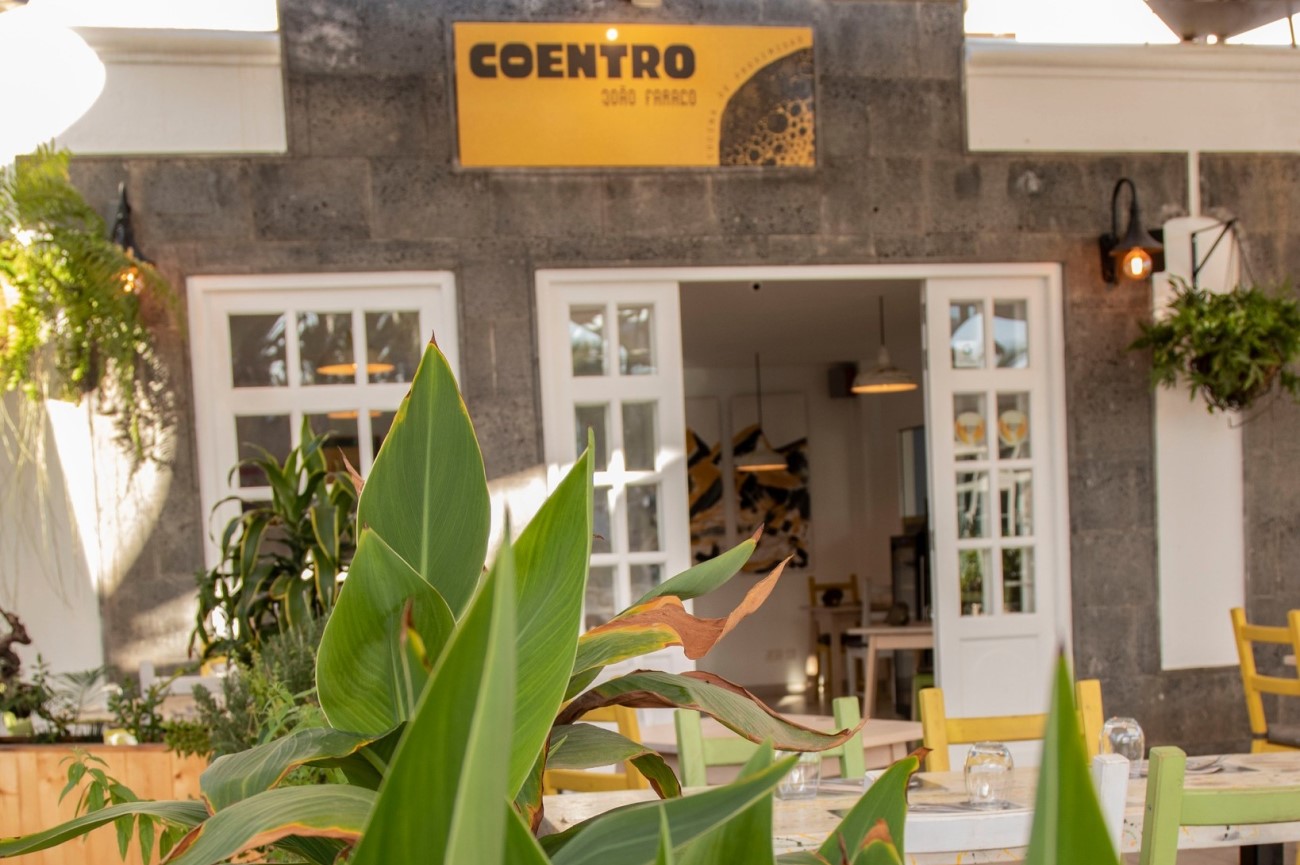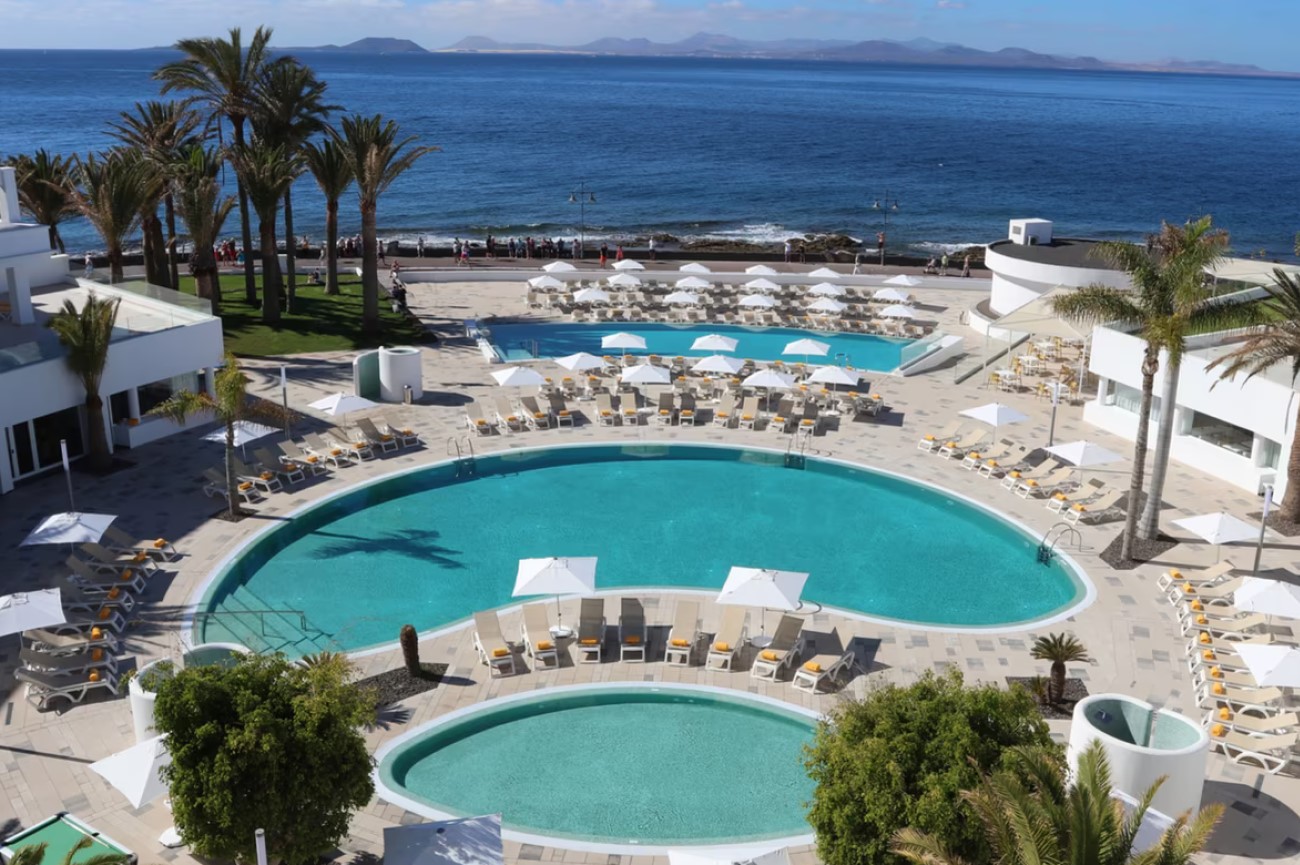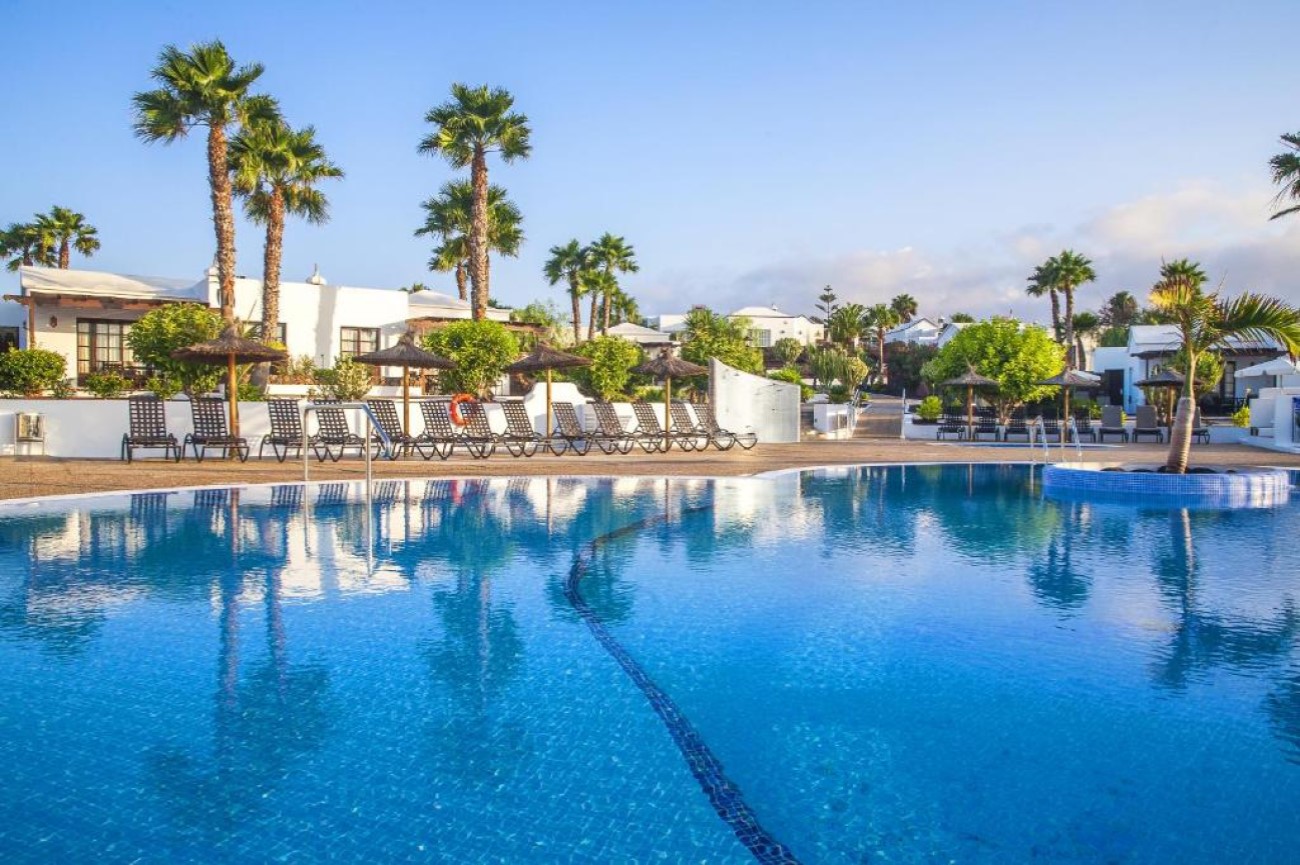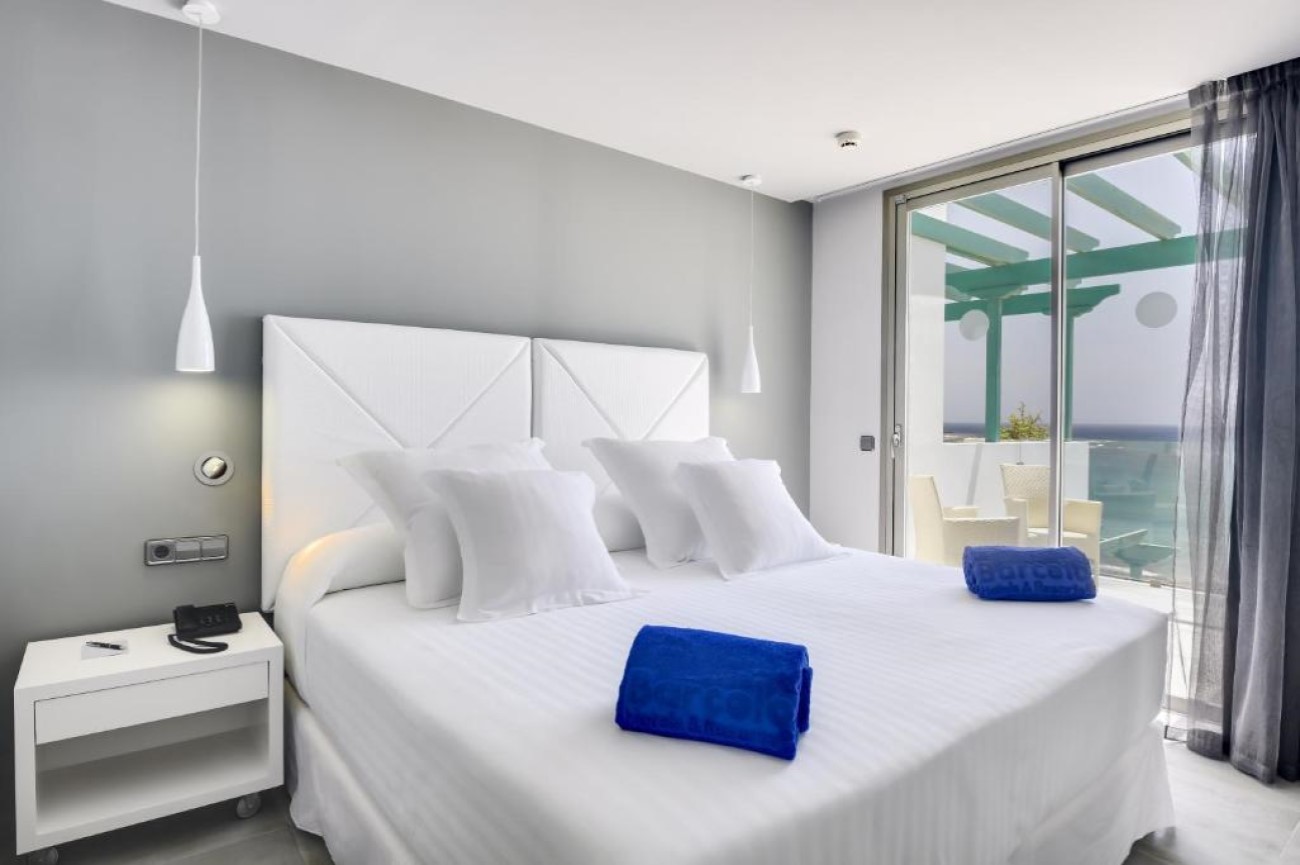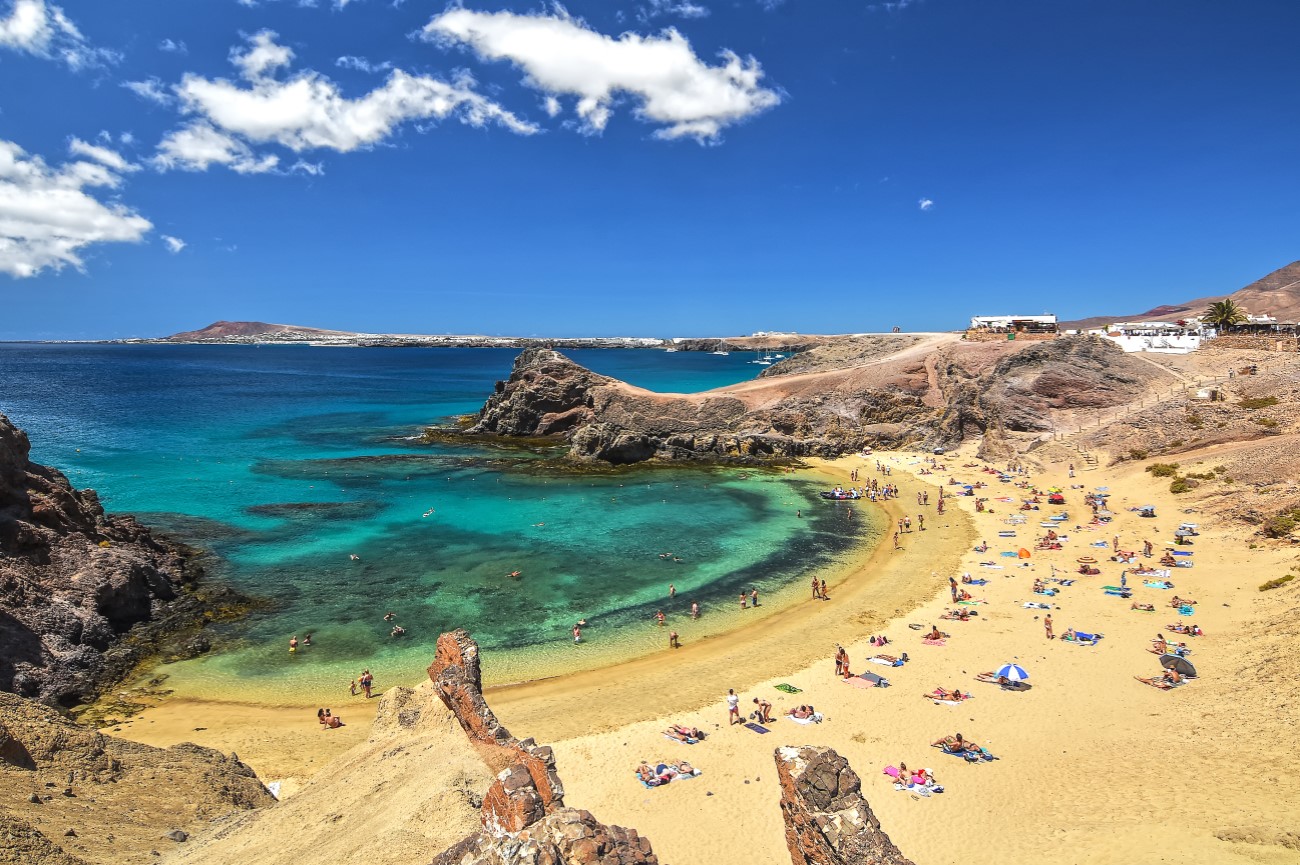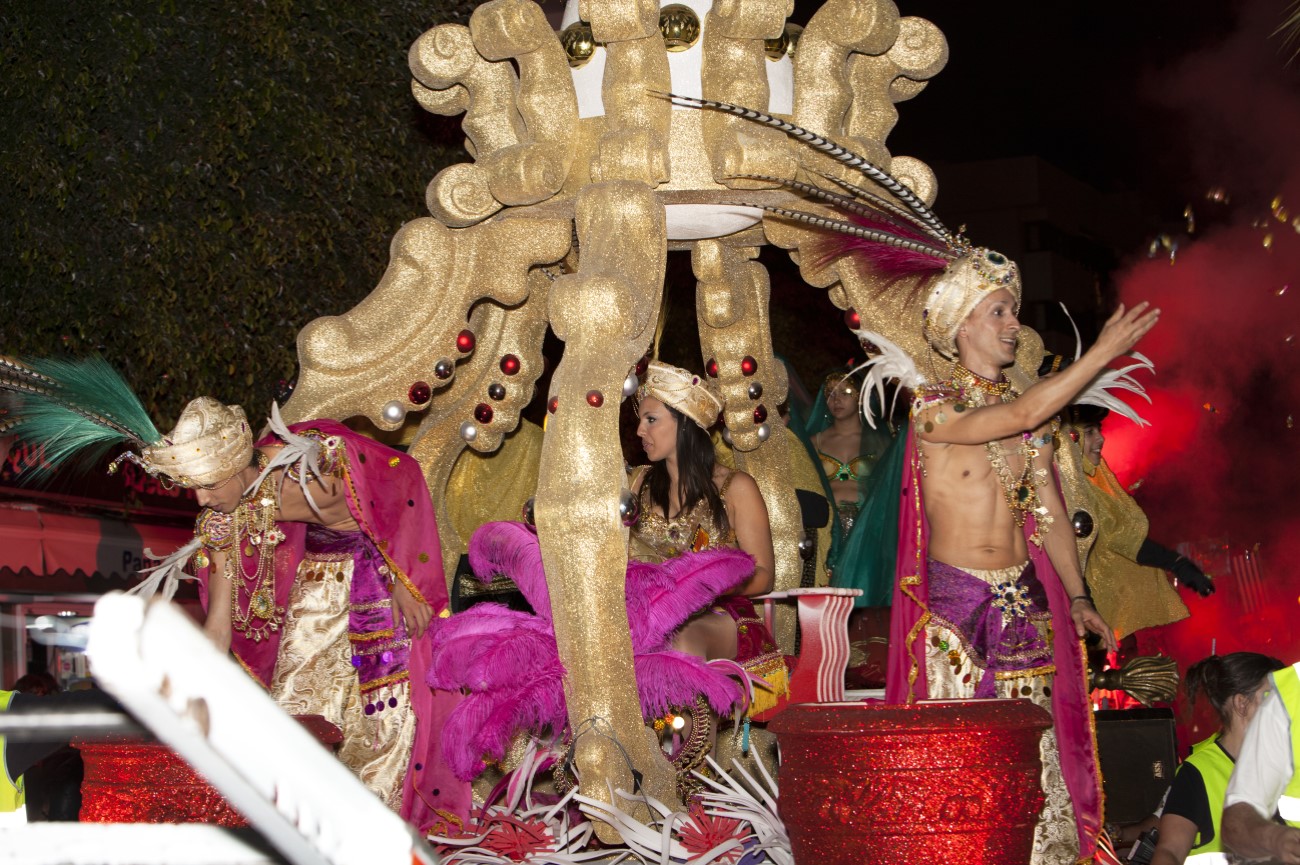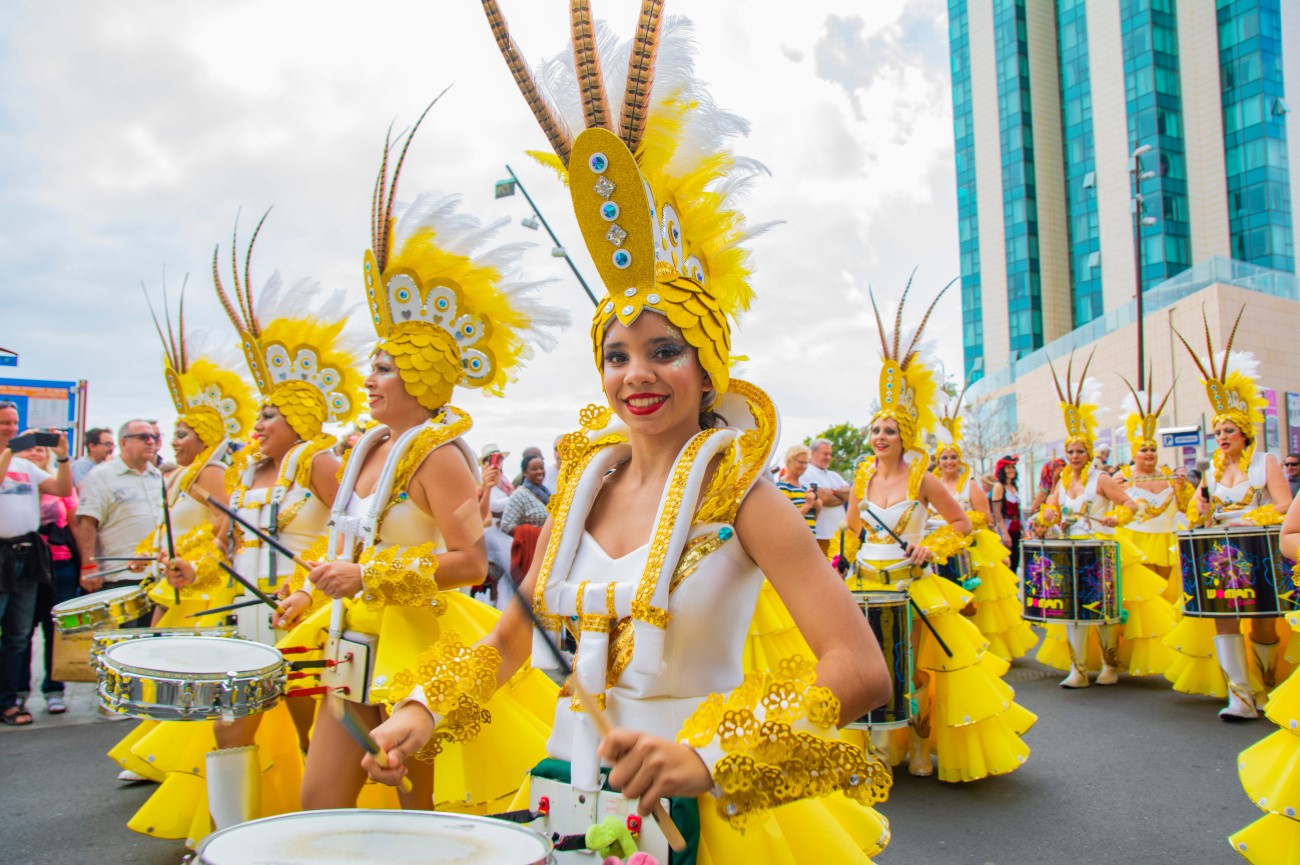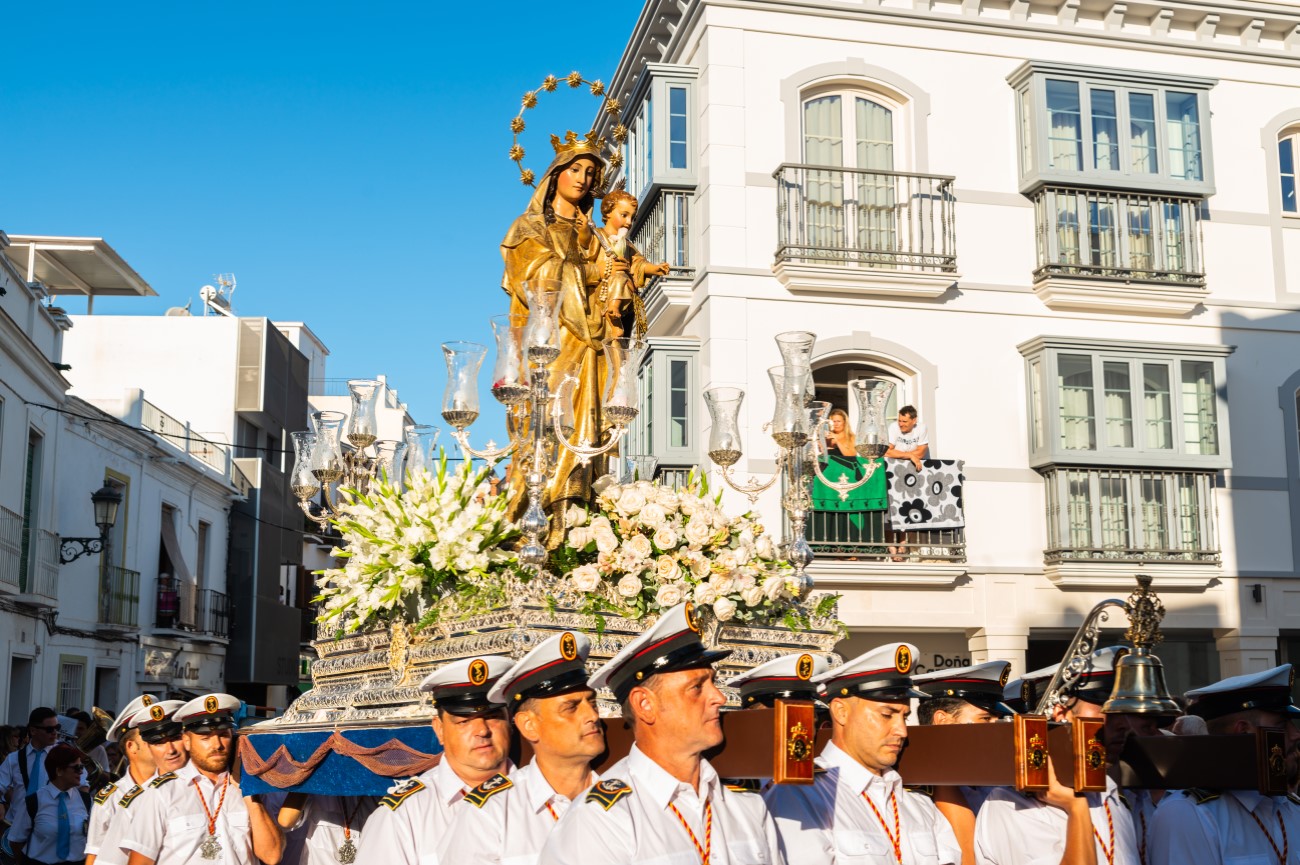Things to do in Lanzarote, Spain - 5-day itinerary
Lanzarote is a protected biosphere reserve in the Canaries. The island is famous for its surreal landscape, which encompasses beaches, lava fields and badlands like the Parque Nacional de Timanfaya. Many of Lanzarote’s main attractions were created by acclaimed local architect César Manrique. These include the Jameos del Agua, the Jardín de Cactus and the Mirador del Río.
A paradise for outdoor lovers, Lanzarote
offers endless trails for hikers and waves fit for surfers, especially
around Famara. More pristine beaches await you in Isla Graciosa, a
smaller island north of Lanzarote.
Our five-day itinerary covers all the top sights in Lanzarote. We’ve also included tips on where to eat and stay while you’re in town.
Day 1

Morning: Arrecife Old Town
Our tour of Lanzarote begins at the island’s capital, Arrecife. Set on the east coast, it is full of cultural attractions, especially around the historic centre. It’s around here that you’ll find the Parroquia de San Ginés. The church stands out with its mix of whitewash and dark volcanic stone. By the coast is a small island topped by the Castillo de San Gabriel, a 16th-century fortress once used to protect the city against pirate raids. Another place worth visiting is the Castillo de San José, which houses the International Museum of Contemporary Art (MIAC). Inside, you can find artworks by Miró, Picasso and Chillida.
Afternoon: Arrecife Coast
After exploring the old town, you can walk along the waterfront. The long promenade takes you all the way to the beach known as Playa Reducto. From here, you can spot the small island of Fermina.
Lagomar Museum
From Arrecife, make your way north towards Nazaret. Here you can visit one of the buildings designed by local architect César Manrique. The Lagomar is essentially a home inserted within caves and furnished with remains of shipwrecks. Visitors can wander through the museum, which covers the history of the property and its original owner, Omar Sharif.
Teguise
Further up the road is Teguise, the island’s former capital and the oldest settlement in the Canaries. Take your time exploring the old town, getting lost in the maze of whitewashed houses. Every Sunday, Teguise hosts a local market at Plaza Clavijo y Fajardo, where you can buy regional produce and souvenirs. Dominating the town is the Santa Bárbara Castle, a 14th-century fortress built on the rim of a volcanic crater. The building is currently closed, but you can still walk around the site and enjoy the panoramic views of Teguise.
Day 1 - Lanzarote Tour Map
Day 2

Morning: Mirador del Río
Start your second day exploring the north side of the island. Our first stop is the Mirador del Río, another creation by César Manrique. The viewpoint sits right above the Risco de Famara, a 22-kilometre-long mountain range. Standing up here, you can take in the Chinijo Archipelago, home to Isla Graciosa and other small islets. You can also spot the water stretch that separates Lanzarote from Graciosa, which locals have nicknamed the ‘river’. There is a small café near the viewpoint where you can stop for a drink.
Órzola
Still on the north coast is the little village of Órzola. It’s worth wandering around town before hopping on the boat to La Graciosa. These depart every thirty minutes from the local port. In a few minutes, you’ll reach Caleta del Sebo, the island’s capital.
Day 2 - Morning Tour Map
Afternoon: Montaña Amarilla
After admiring the historic town of Caleta del Sebo, you can hike up to Montaña Amarilla, one of the island’s top attractions. The mountain gets its name from the volcano’s yellow hue. You can also cycle or take a 4x4 taxi to Playa de La Francesa and then walk from there. This may be a better option if you want to avoid the heat. The whole journey should take about one hour and a half.
Playa de la Cocina
Walk back down to the coast and enjoy a swim at Playa de la Francesa. Here you can follow a path to the more secluded beach of Playa de la Cocina, an ideal spot to catch the sunset.
Day 2 - Afternoon Tour Map
DAY 3

Morning: Jardín de Cactus
Jardín de Cactus is among the most famous Manrique art installations in Lanzarote. The garden features over 4,500 cacti, hailing from the Canary Islands and far-off places such as Madagascar and Tanzania. After taking in the panoramic view of the garden, you can walk down the steps to admire the collection up close. Nearby is a 19th-century windmill once used to make gofio (toasted maize flour), an essential ingredient in Canarian cuisine.
Jameos del Agua
Continue north until you reach Jameos del Agua, another iconic project by César Manrique. It is meant to represent a journey to the centre of the Earth. That’s what it feels like when you walk down the steps and into a 6km-long volcanic tunnel formed by the eruption of the Volcán de la Corona. Jameos del Agua covers the section closer to the coast. Plants grow amid the rocks while crabs paddle around. The space includes a natural lake, caves and lush gardens. Attending a concert at the auditorium surrounded by this volcanic setting is a magical experience you shouldn’t miss.
Cueva de Los Verdes
In the same tunnel as the Jameos is another incredible sight called Cueva de Los Verdes. The cave features three intersecting galleries that form a sort of maze. With an average temperature of 19ºC, it is a pleasant place to escape the summer heat. In the past, the cave served as a shelter for animals and a hiding place from pirates. It was only in 1964 that it became a tourist attraction. What you see today is the result of a collaboration with artist Jesús Soto, who uses a combination of light and shadow to highlight the stone and the colourful lava stalactites. Among the highlights are the Garganta de la Muerte (Throat of Death), the Sala de las Estetas (Hall of the Aesthetes) and the Puerta Mora (Moorish Doorway).
Afternoon: Costa Teguise
Spend the afternoon relaxing along the Costa Teguise. There’s plenty to keep you busy here, including golf courses, a water park and an aquarium. Most people head here for the beach. Las Cucharas, Los Charcos and El Jablillo are among the best beaches in the area. This last one tends to be a bit quieter. If you’re in the mood for a hike, several trails take you to the nearby mountains of Tinaguache, Tahiche and Tejia.
Day 3 - Lanzarote Tour Map
DAY 4

Morning: Playa de Papagayo
We’re heading south to explore some of the most stunning beaches on the island, starting with Playa de Papagayo. This secluded beach is set within a protected area, so there is a small fee to enter. The clear turquoise waters offer the ideal setting for snorkelling, while the surrounding cliffs shelter visitors from the wind. There are only a few amenities around, including a few bars, a campsite and a car park.
Playa Mujeres
Another incredible beach on the southern coast of Lanzarote is the Playa Mujeres. With fine white sands and paradisical water, this beach is perfect for anyone who wants to escape the city bustle. It’s only 400 metres long with barely any waves, making it ideal for families.
Playa Blanca
Just a few miles west of Playa Mujeres, you’ll find Playa Blanca. Alongside the beach is a small town with the same name where you can go for a stroll. Ferries to the nearby island of Fuerteventura depart from the marina here.
Afternoon: Bodegas El Grifo
Take a small detour to visit the Bodegas El Grifo, the oldest winery in the Canaries. You can book a tour to learn more about the wine production on the island and sample a digestive. Tours are available in the morning or in the afternoon around 3pm.
Playa del Janubio
Back on the coast, we’re heading to Playa de Janubio. This wild beach is located near the town of Yaiza. Stretching for 800 metres, it stands out with its black volcanic sand. The currents tend to be strong in this area, so avoid swimming here. Nearby are the Salinas de Janubio, a collection of salt pans producing salt since the 19th century.
Los Hervideros
Further north is an area called Los Hervideros, a coastal site famous for its rock formations and hidden caves. You can stop by to admire the views, go fishing or follow one of the walking routes that cover the salt pans and the Charco de Los Clicos.
Charco de Los Clicos
Charco de Los Clicos is among the most important landmarks on the island’s south coast. Located right next to the small fishing village of El Golfo, this little bay draws visitors with its emerald-green waters. The colour of the water comes from the high concentration of algae which contrasts against the black sand of the surrounding shores. It is a special place that has been featured in many films, including Pedro Almodóvar’s Los abrazos rotos. For the best views, make sure to head to the viewpoint at El Golfo. There’s also a path starting at the car park, which we’ll take you a bit closer to the lake.
Day 4 - Lanzarote Tour Map
DAY 5

Morning: Timanfaya National Park
Four our last day on the island, we’re going deep into the Timanfaya National Park. Also known as the Montanas de Fuego, the area has been a national park since 1974. It is full of volcanic formations and lava flows. Walking around here, you can still feel the high temperatures, evidence of the magma chamber below you. Start with a visit to the Mancha Blanca Visitor and Interpretation Centre, where you can learn more about this 50-square-kilometre volcanic park. It is possible to explore the area on your own by following one of the hiking trails. Some of the most famous ones are the Ruta de Los Volcanes and the Caldera Branca. However, it is best to visit with a guide to avoid getting lost. Alternatively, you can join a camel or a bus tour.
Afternoon: Caldera de Los Cuervos
Our next stop is the Caldera de Los Cuervos. A 4.2km trail takes you around the perimeter of the volcanic crater and even inside it. It is a relatively easy hike, with informative panels along the way covering the history of the area.
Puerto del Carmen
End the day at Puerto del Carmen. It is one of the most popular resort areas on the island, so expect to see a few crowds. Head to the harbour and then walk along the Avenida de las Playas, a busy promenade facing the sea. There are plenty of bars and seafood restaurants around the area where you can stop for a meal.
Day 5 - Lanzarote Tour Map
Other things to do around Lanzarote
- Ruta de Los Volcanes: This circular route takes you around the island's volcanos. The easiest way to start is at the parking near El Cuervo. From there, you can walk towards Montaña Negra. The trail continues along Montaña Colorada and Volcán de Santa Catalina before returning to El Cuervo.
- Caldera Branca: This volcanic crater is located near the town of Mancha Blanca. The best way to explore the area is to follow the 10km trail starting at the Iglesia de los Dolores. Many parts of the trail are exposed, so make sure to bring a hat and sun cream.
Top things to do with kids in Lanzarote
Lanzarote offers plenty of family-friendly sights. If you want to hit the beach, Puerto del Carmen and Playa Blanca have some of the best spots for families. Costa Teguise, on the other hand, is ideal for watersports like windsurfing. In the summer, you can take advantage of the waterparks, including Aqualava Waterpark and Aquapark Costa Teguise. This last one also includes an area for paintball.
Other fun attractions include the Rancho Texas, the only animal park on the island and the Jurassic Kingdom, a mini golf course with dinosaurs in every corner. You can also book a submarine ride near Puerto Calero or ride a camel along the Timanfaya National Park.
Where to eat in Lanzarote
Potatoes, lentils and fresh fish are some of the essential ingredients of Lanzarote's cuisine. Typical dishes include marinated tuna, escaldón (a mix of gofio and fish broth) and the puchero canario (meat stew). For dessert don't miss the bienmesabe, a sweet made with almonds, sugar, eggs and lemon, often paired with ice cream. Below are some of the best places to eat in Lanzarote:
- El Amanecer: El Amanecer is one of the best seafood restaurants on the island. You can order anything from mussels to octopus or grilled fish. Grab a seat by the terrace and enjoy the sea views as you tuck into your favourite dish.
- Bar Cafeteria El Pisquito: This tiny tapas bar in Arrieta specialises in seafood treats. Try the limpets and the octopus.
- La Bohemia: Located around Costa Teguise, La Bohemia focuses on grilled meat. Most of the ingredients come from the Río de la Plata, an area between Argentina and Uruguay.
- Costa Azul: Facing the beach, this restaurant is only a few steps from the town of El Golfo. Enjoy the fresh seafood and pair it with a glass of local wine.
- Taberna De Nino: Set near the harbour of Puerto del Carmen, this is the ideal spot to sample some local tapas.
- La Carmencita del Puerto: Set in Avenida de las Playas this restaurant serves a variety of tapas. Choose a couple of dishes to share and try the rebujito, a cocktail made with sherry, lemonade, raspberries, mint and ice.
- La Cabaña Macher Restaurante: Chef Darren Spurr runs this cosy restaurant near the Macher village. The menu features a mix of international dishes, including steak with chimichurri, British puddings and lamb chops with mint aioli.
- La Cocina de Colacho: For a taste of fine dining, head to this family-run restaurant in Playa Blanca. The open kitchen allows you to see the preparation of each dish, which uses Canarian flavours and modern cooking techniques.
- Coentro: Around Puerto Calero is Coentro. The restaurant is run by Chef João Faraco, considered one of the best chefs on the island. Visitors can choose between the tapas menu or a seven-course meal.
Where to stay in Lanzarote
- Iberostar Selection Lanzarote Park (5 stars): Located in the south of Lanzarote, Playa Blanca is an ideal area for families. This five-star resort offers direct access to the beach and plenty of facilities, including seven outdoor pools, a gym and a kid’s club. The rooms are spacious, and many offer sea views.
- Jardines del Sol (4 stars): Also in Playa Blanca, this hotel offers a mix of apartments and private villas. These come with balconies and kitchens, allowing you to cook your own meals. Other facilities include a restaurant, outdoor pool, mini golf and a spa. You can also rent bikes to explore the surrounding area.
- Barceló Teguise Beach (4 stars): This modern hotel in Costa Teguise is conveniently located near the Playa Reducto. It’s only open for adults, making it ideal for a romantic getaway or a trip with friends. Guests can relax in the spa or take advantage of the heated pools. There are also several restaurants and bars where you can unwind at the end of the day.
Best time to visit Lanzarote
The weather in Lanzarote tends to be dry and sunny pretty much all year round. Temperatures range between 20°C in January and 28°C in summer. This means there’s rarely a bad time to visit. Of course, if you want to avoid the higher temperatures, it’s best to come around spring or autumn.
Lanzarote Festivals
- Día de Reyes: Celebrated on January 6th, Día de Reyes marks the end of the Christmas festivities. This is when families exchange their gifts. There are bonfires across the island and shops selling the infamous Kings’ Cake (Roscón de Reyes). The day before, Arrecife welcomes a procession known as Cabalgata de Reyes, where the three wise men parade the streets on camels.
- Carnival: Just like in other Canarian Islands, Carnival is one of the most popular annual celebrations. The dates vary each year, but it’s usually around February or March. The festivities include parades of floats, drag queen competitions and the performances of the murgas (large groups who dress up and perform satirical songs). Traditions change from town to town. In Teguise, for example, there’s the Parranda de los Diabletes, with locals wearing devil masks to terrorise visitors. The celebrations finish with the “Burial of the Sardine”, which depicts the funeral of a sardine.
- Nuestra Señora del Carmen: On the second fortnight of July, Lanzarote celebrates the Nuestra Señora del Carmen with processions across the island. The event also includes other activities like folklore performances, craft fairs, and the lucha canaria (Canarian wrestling).


